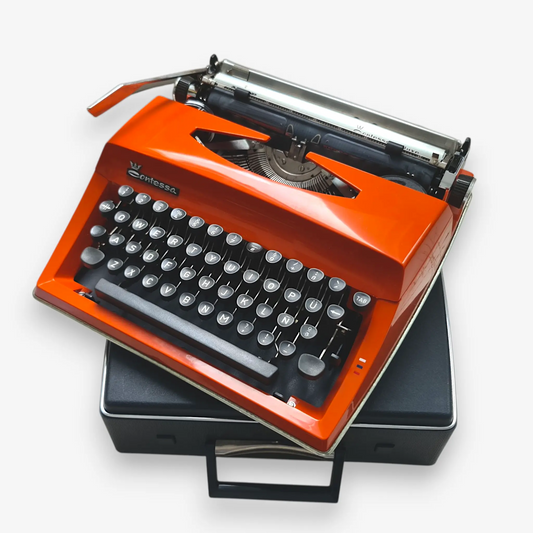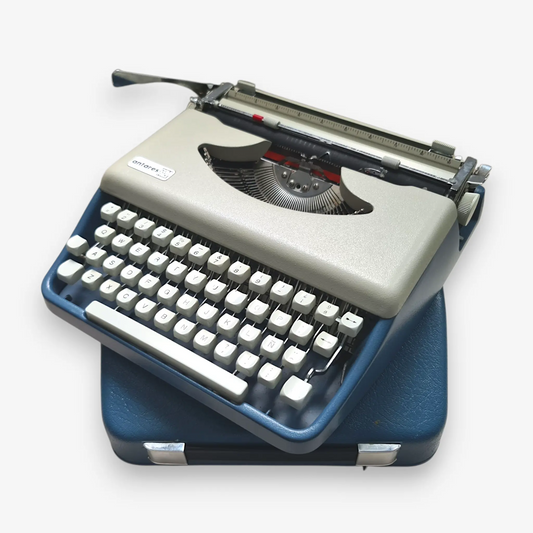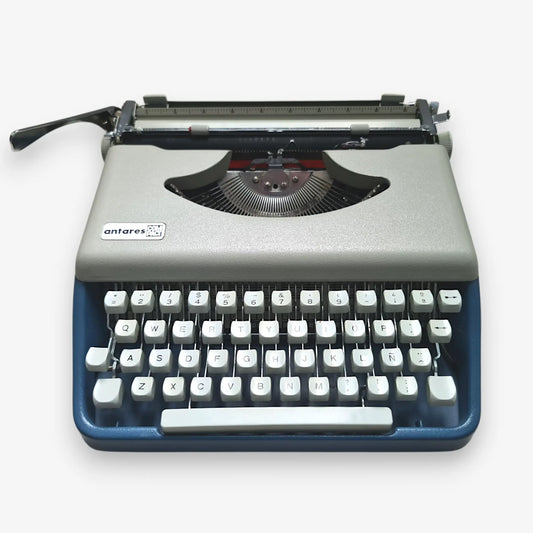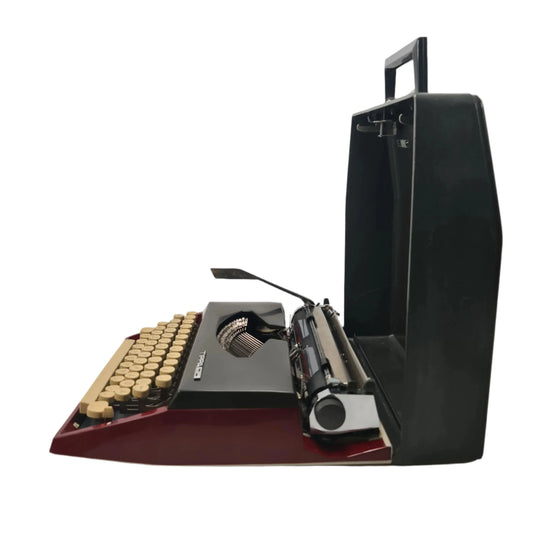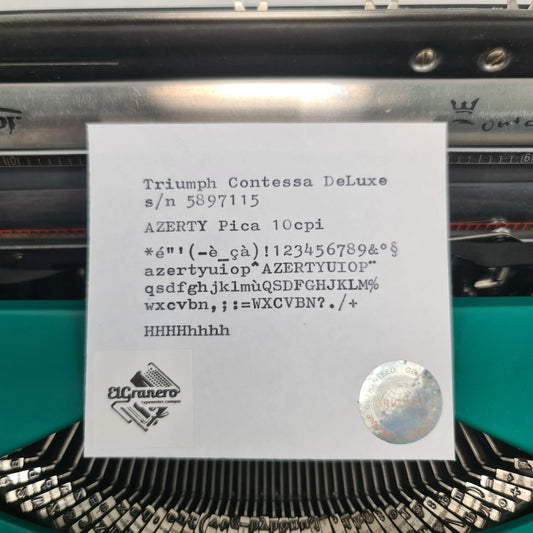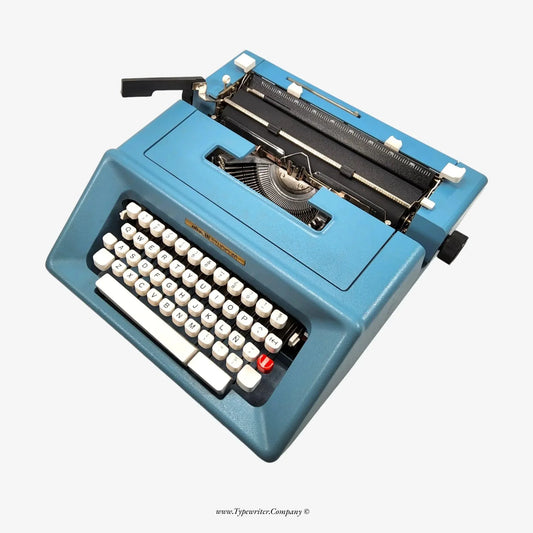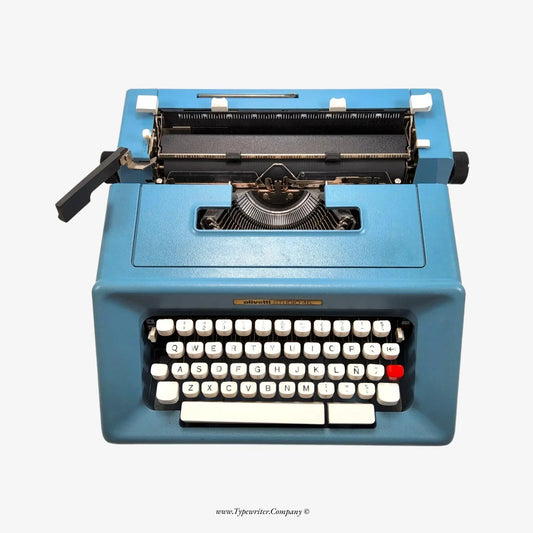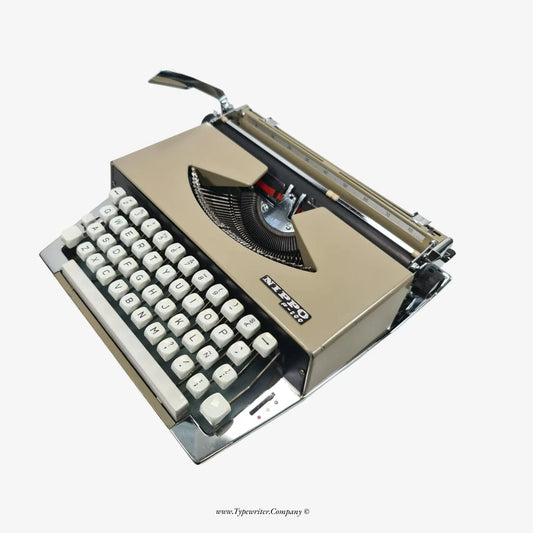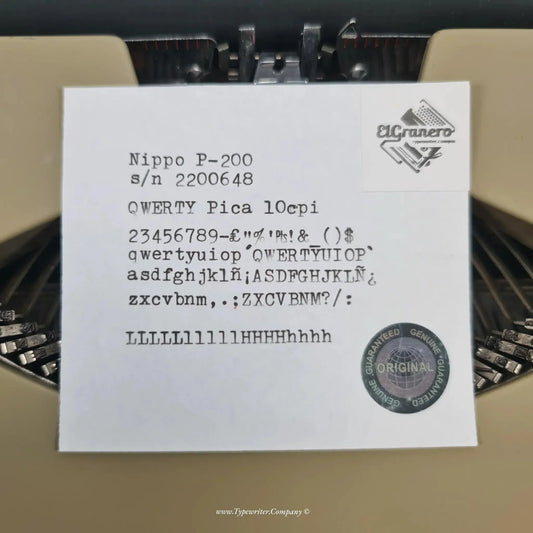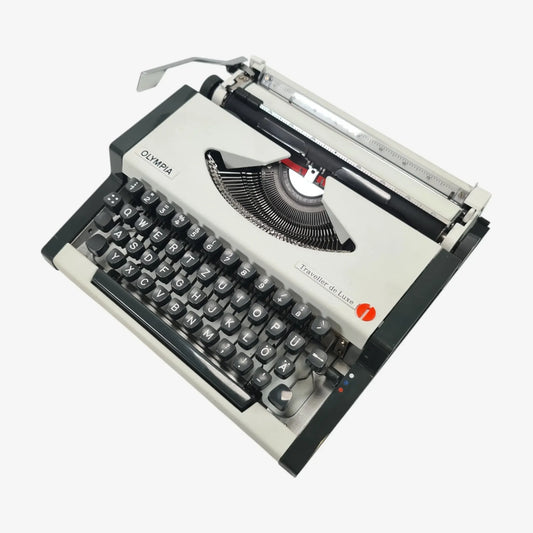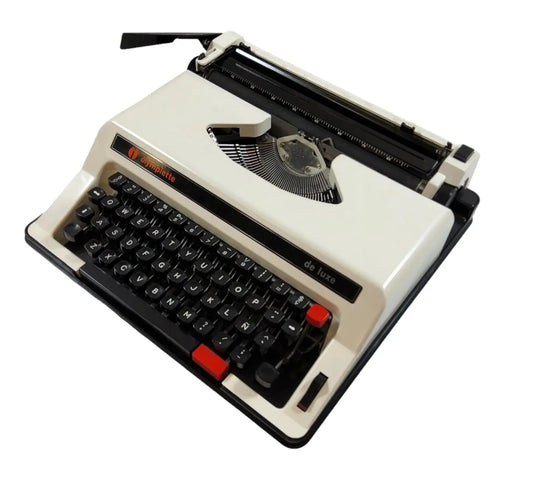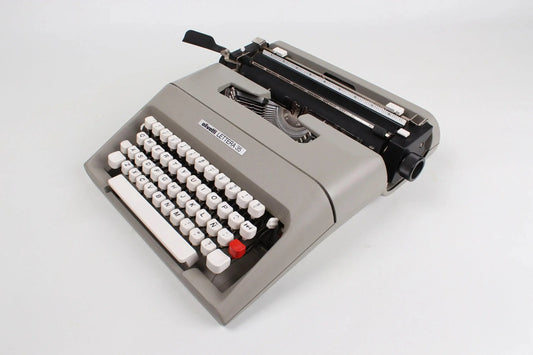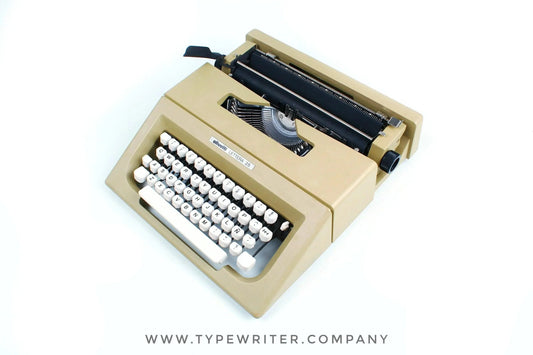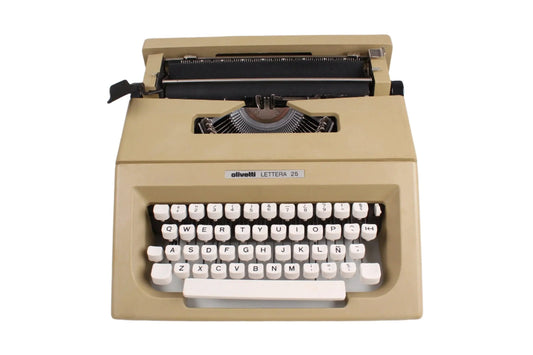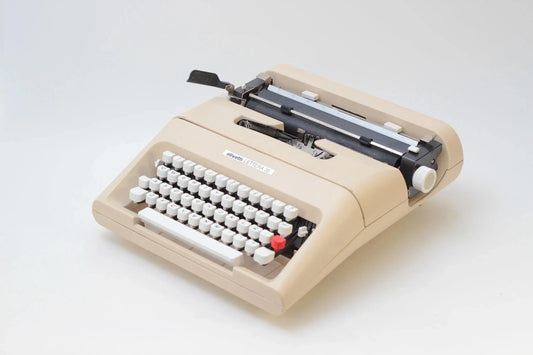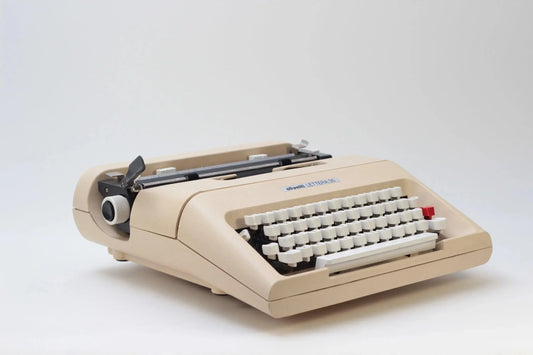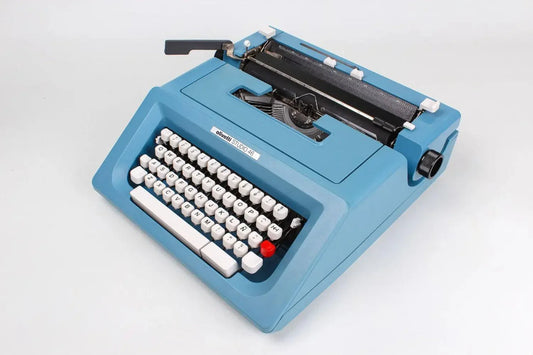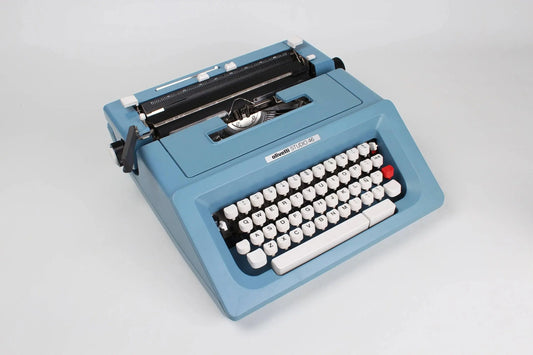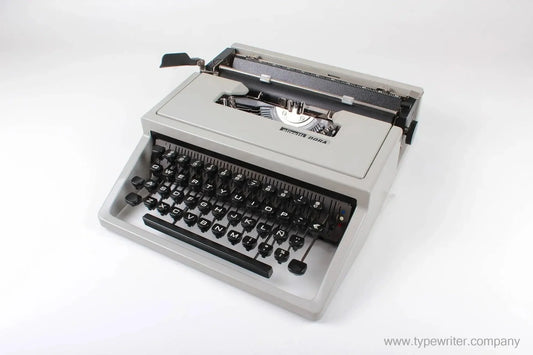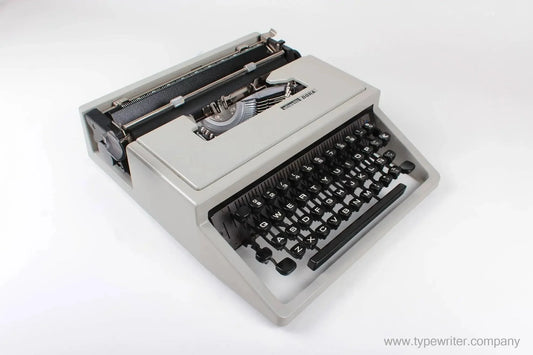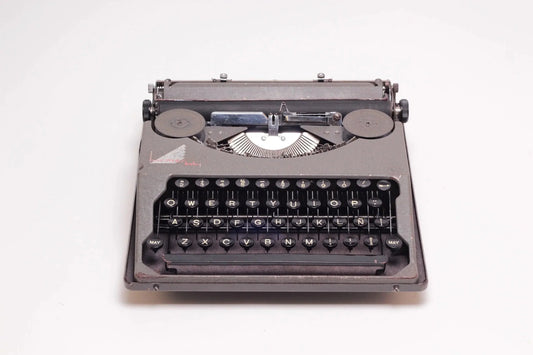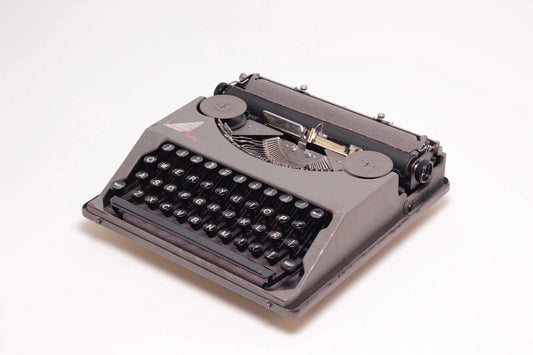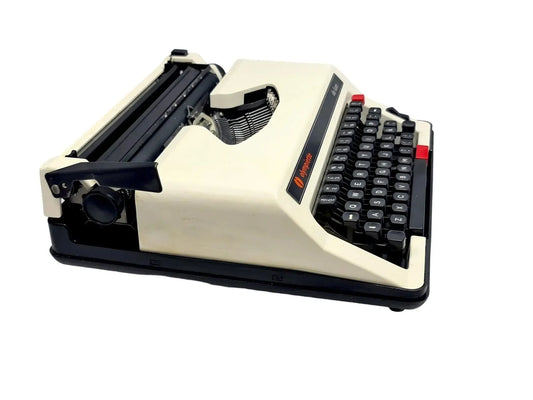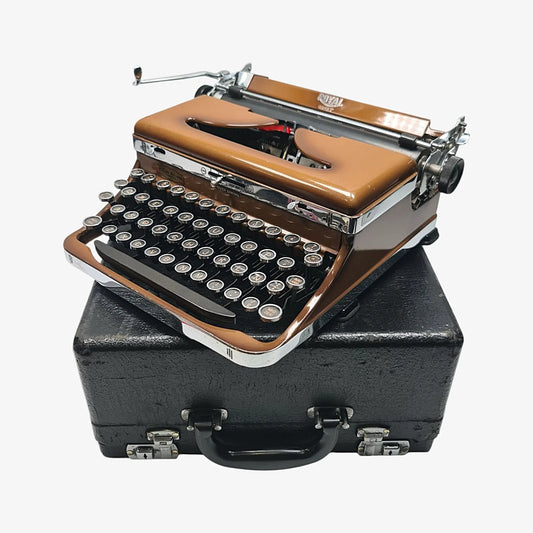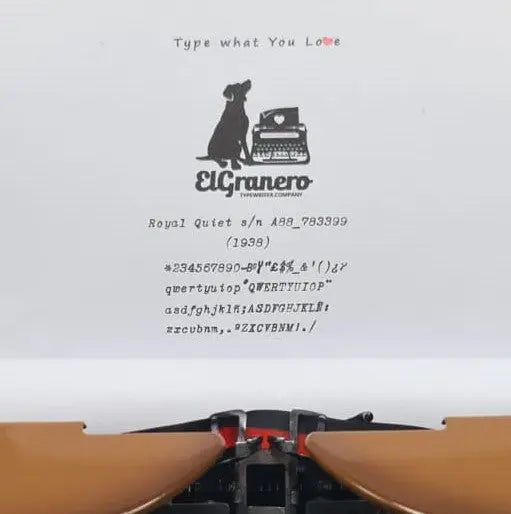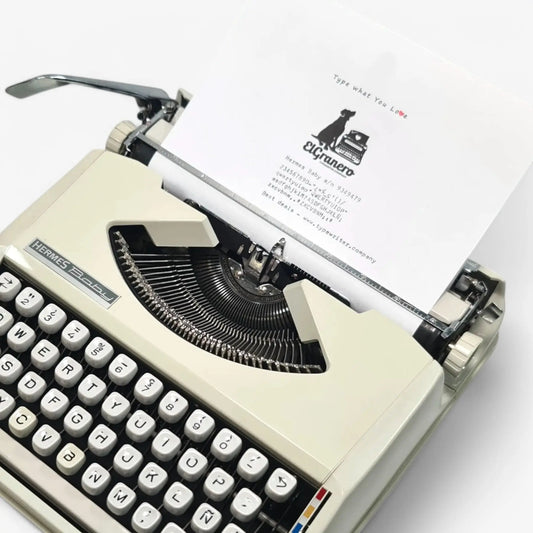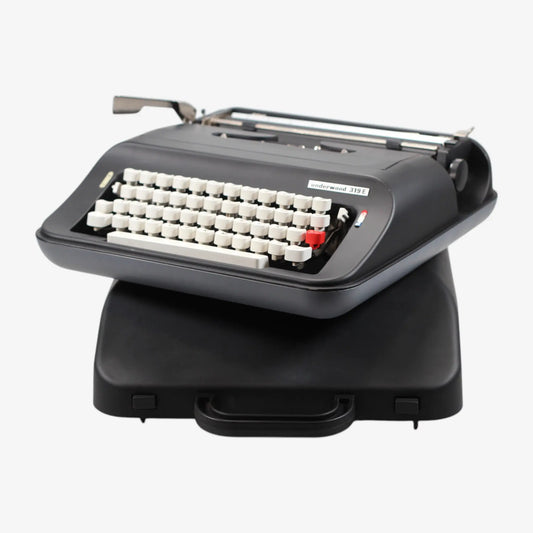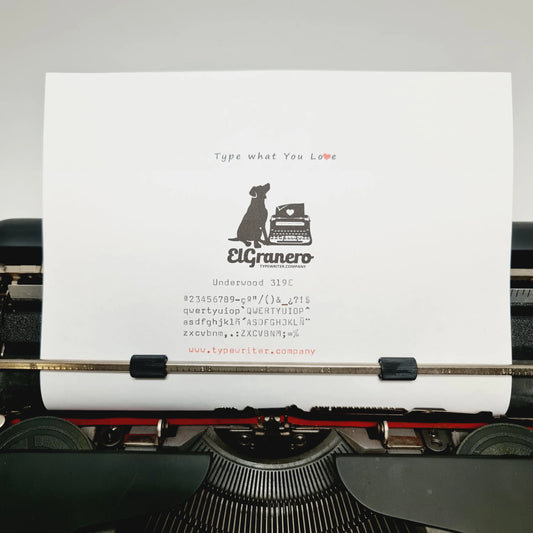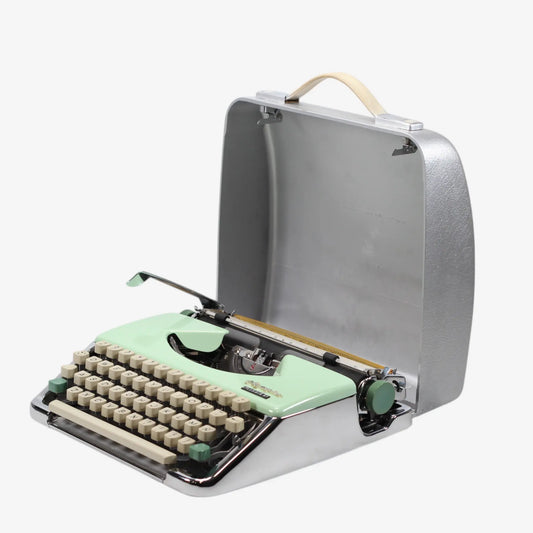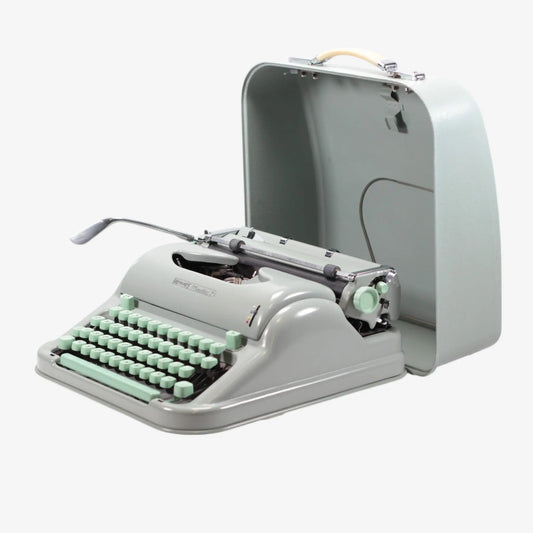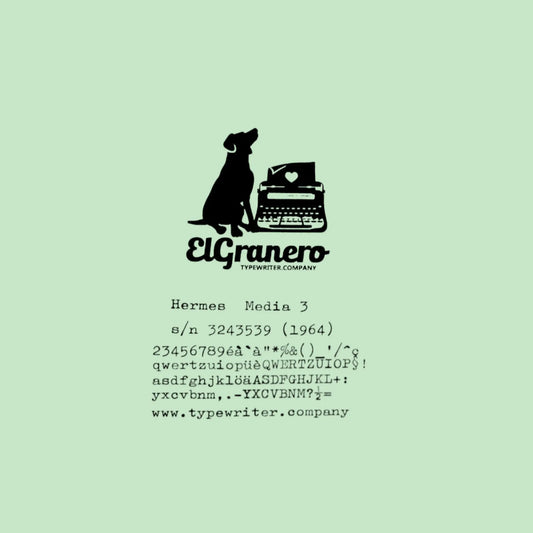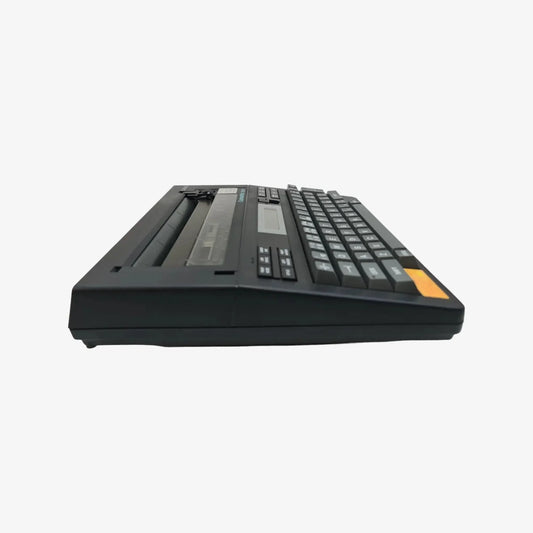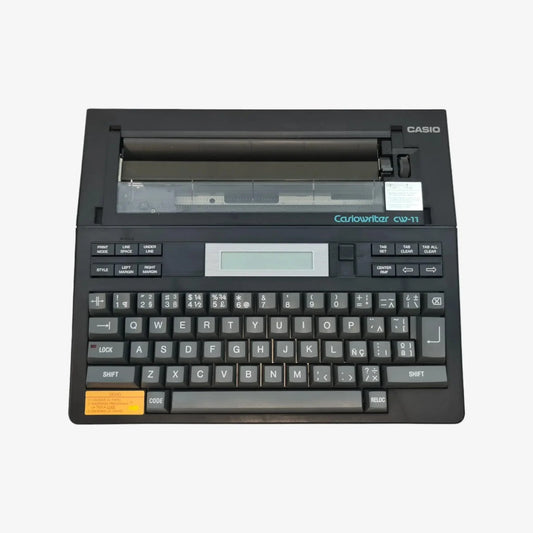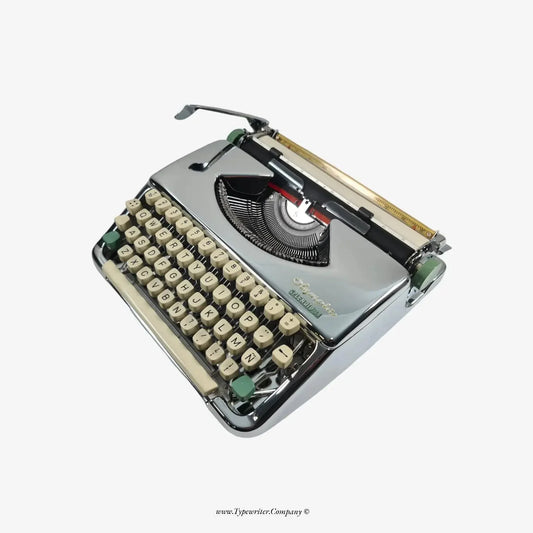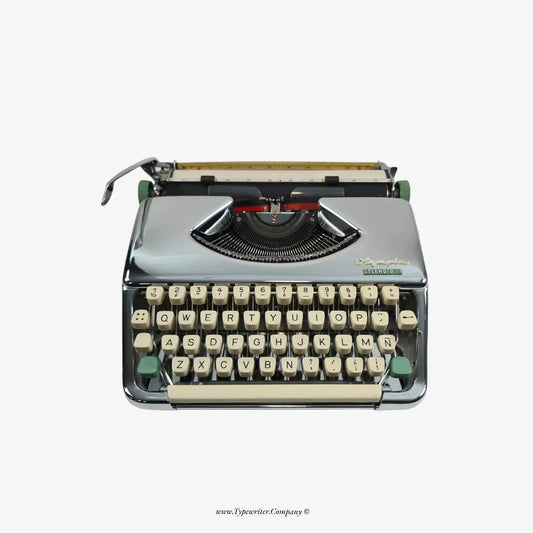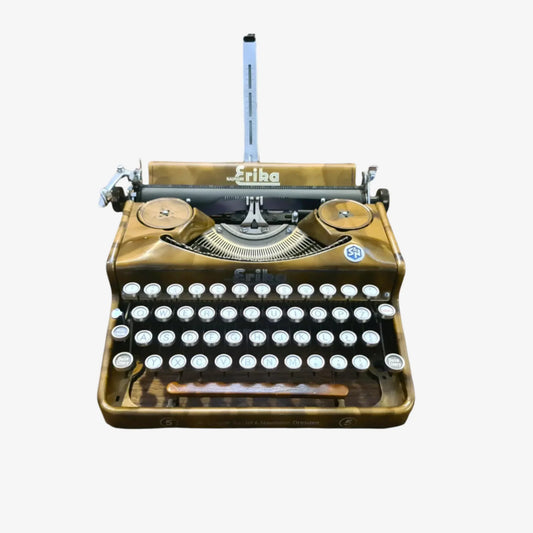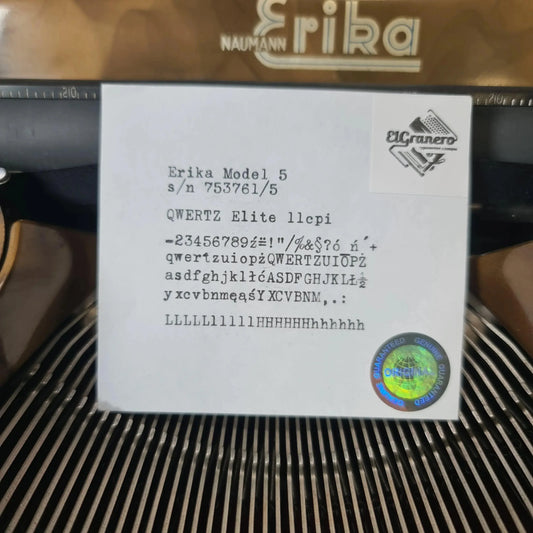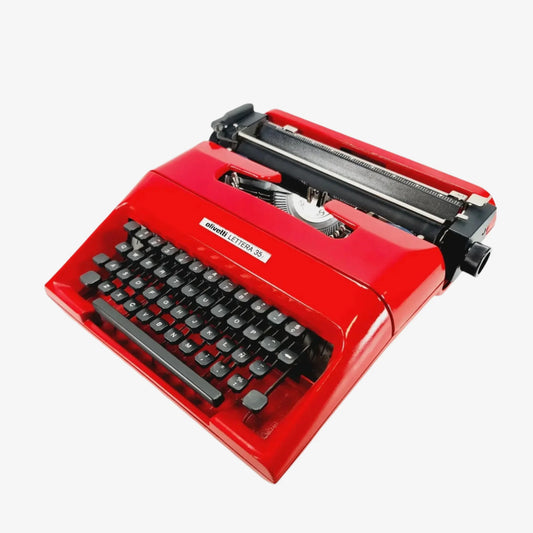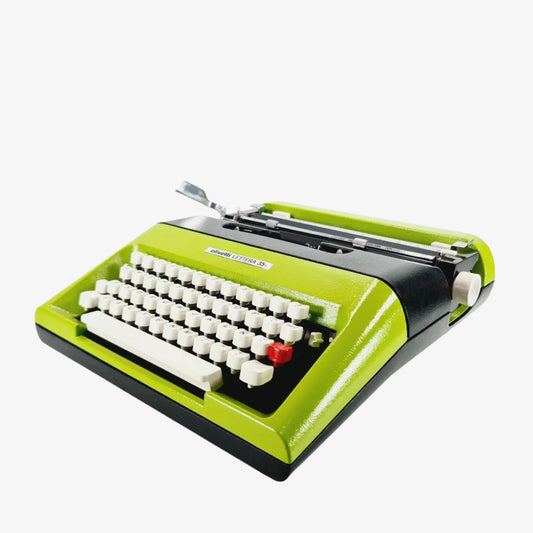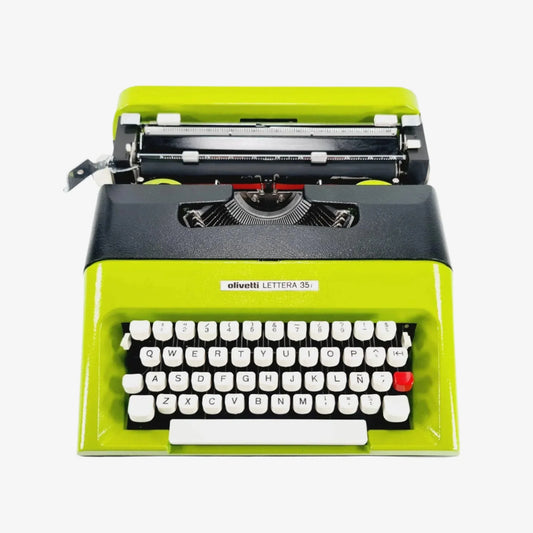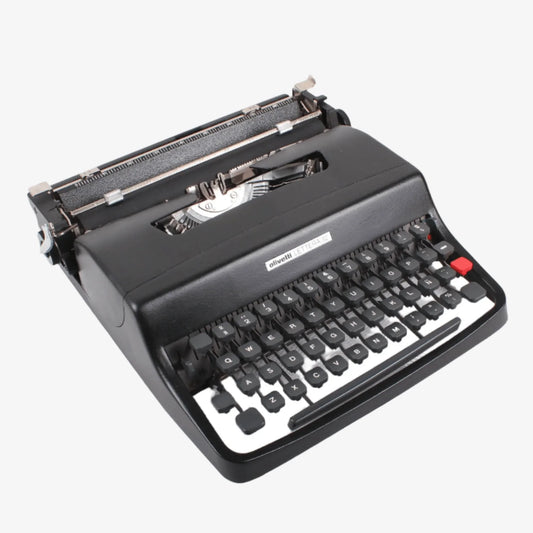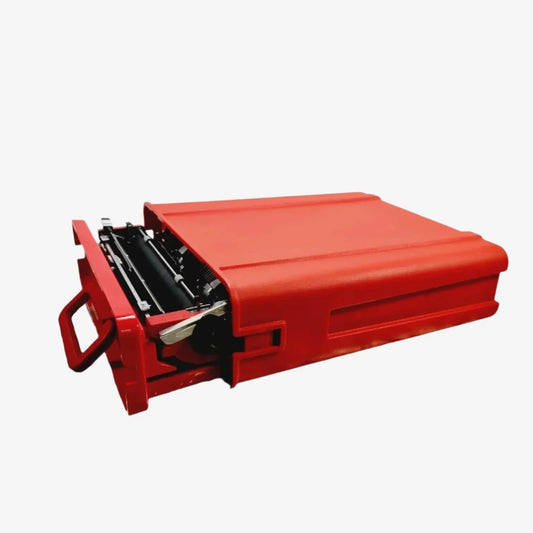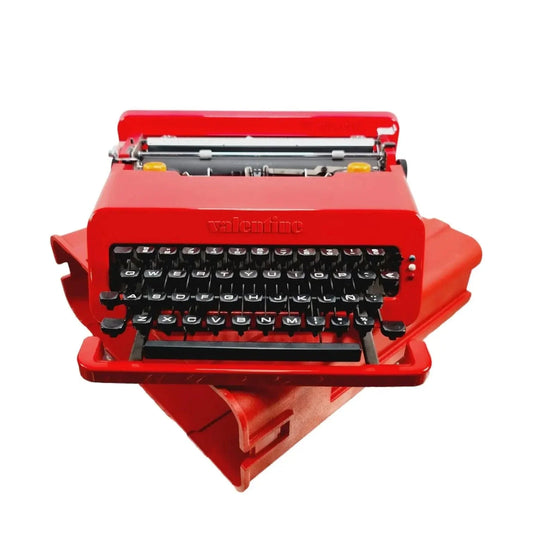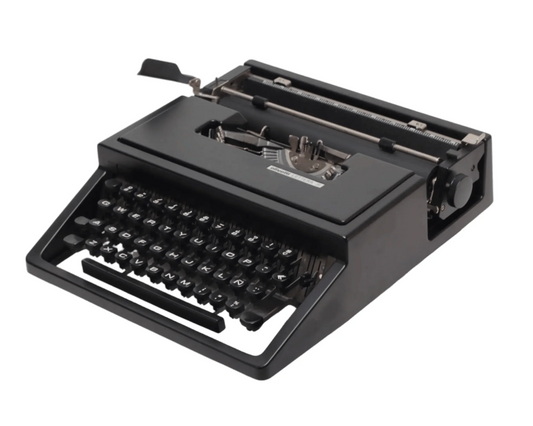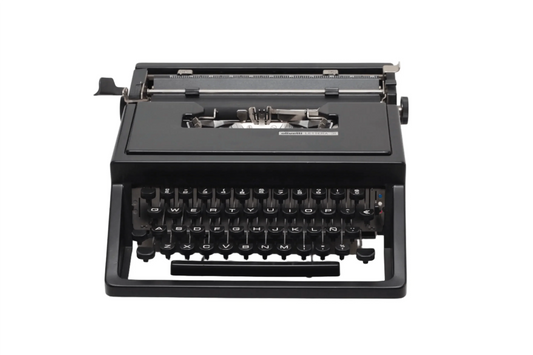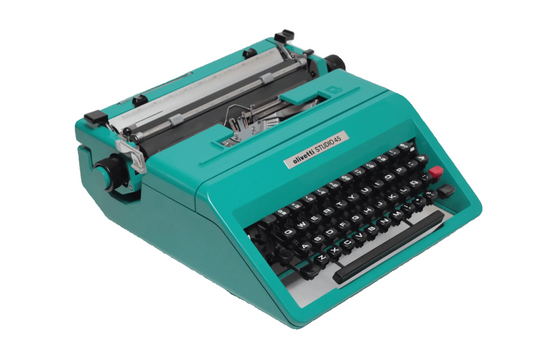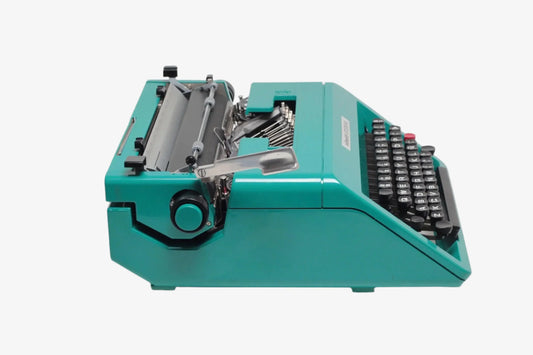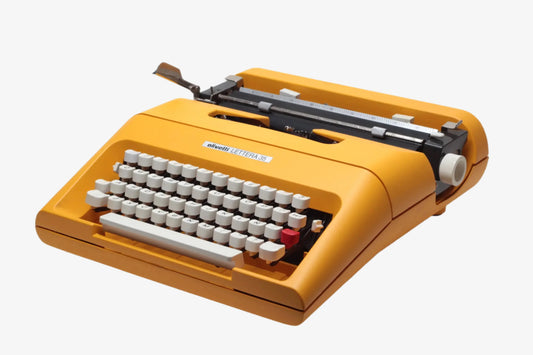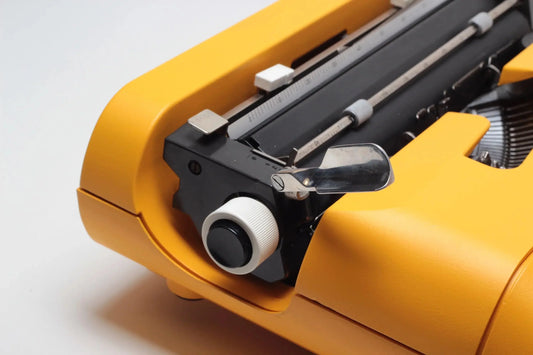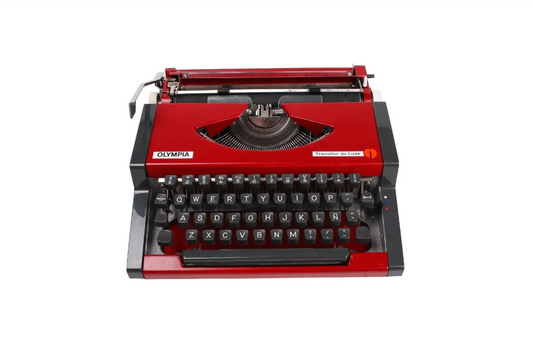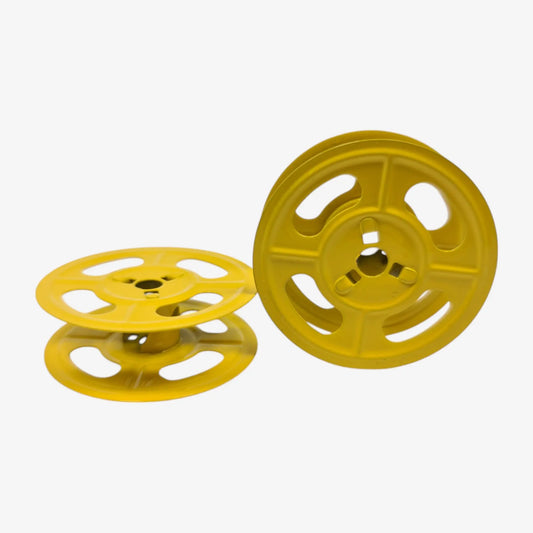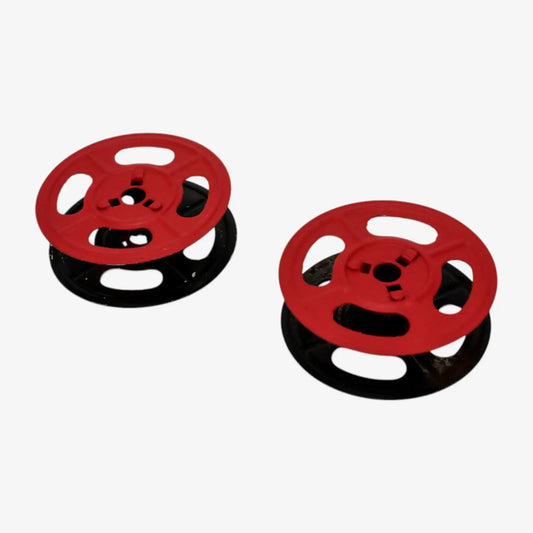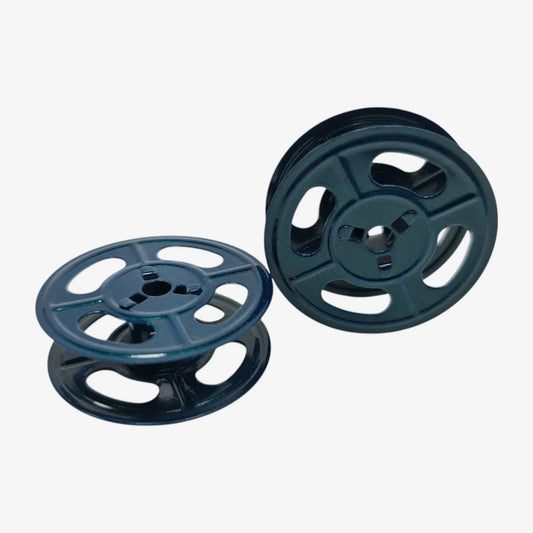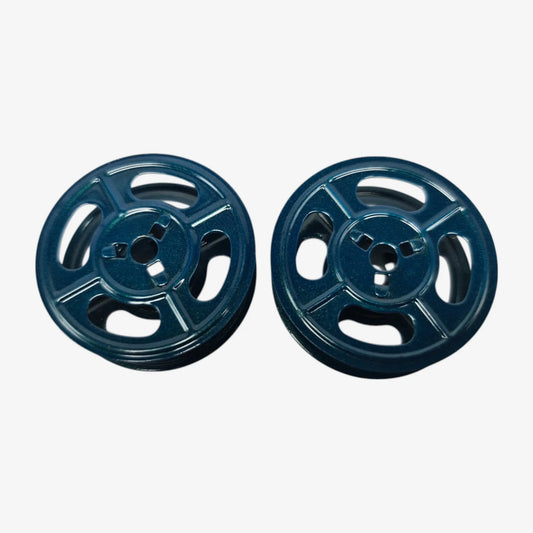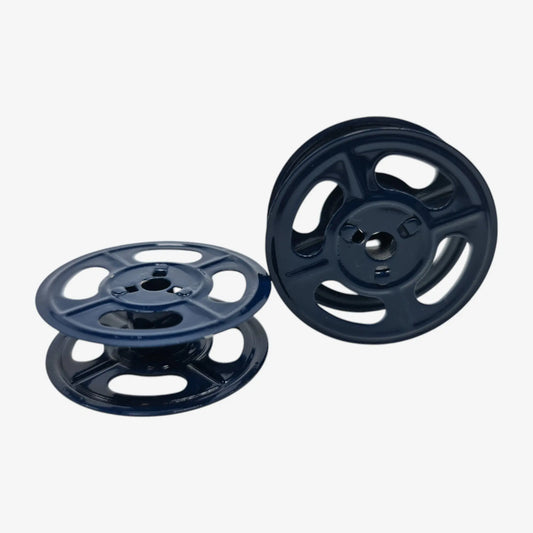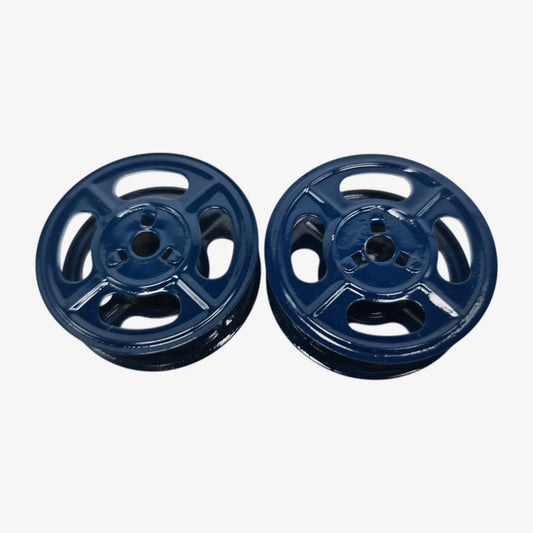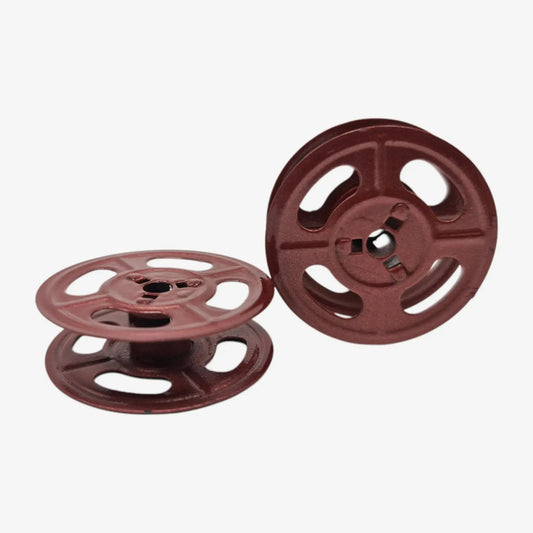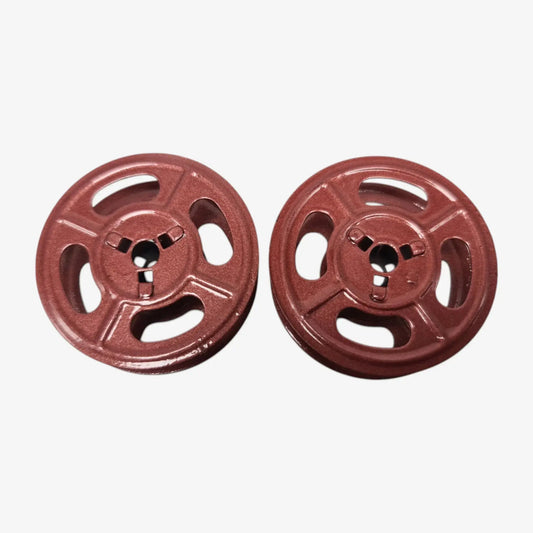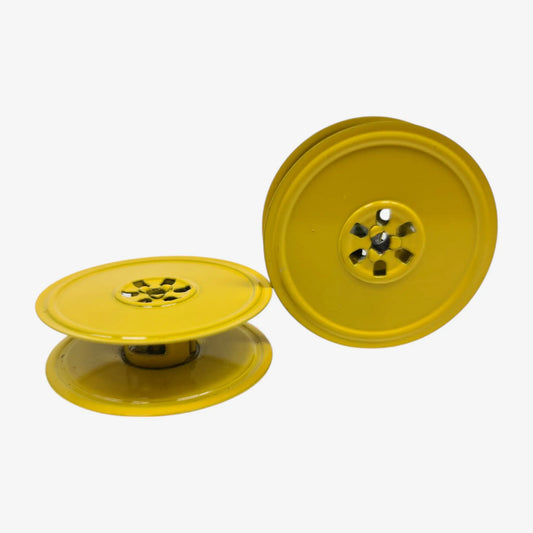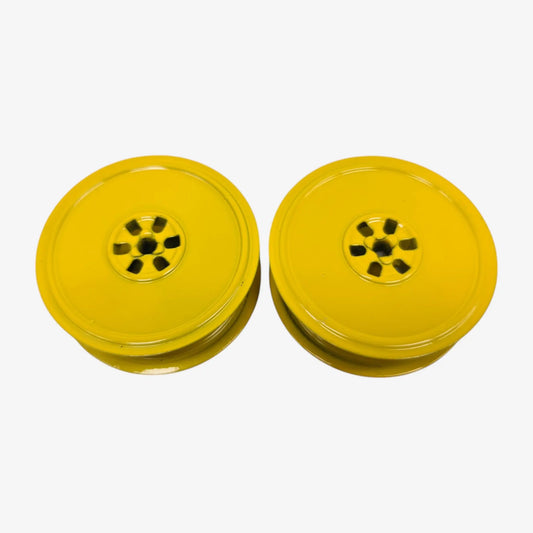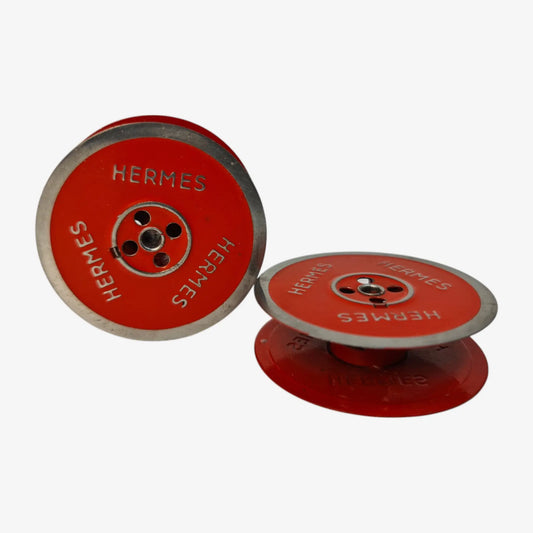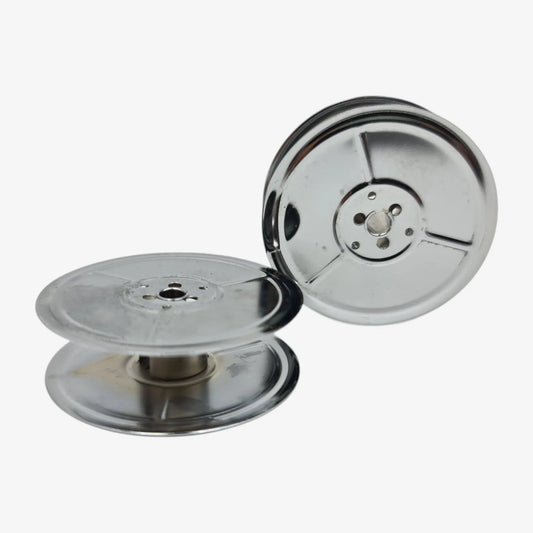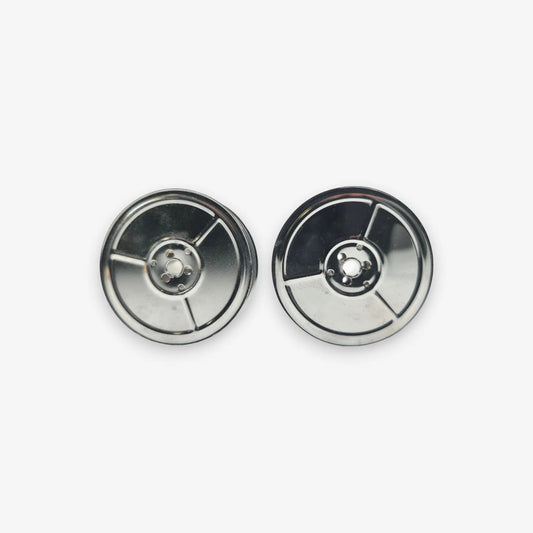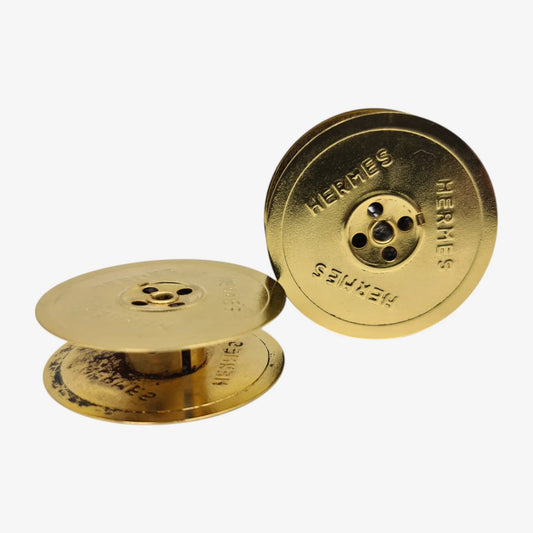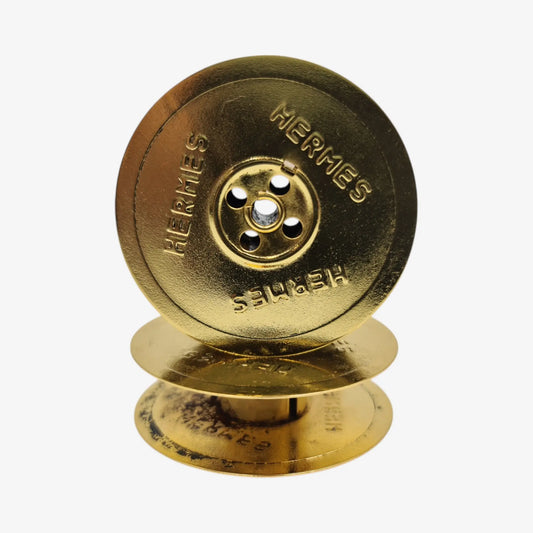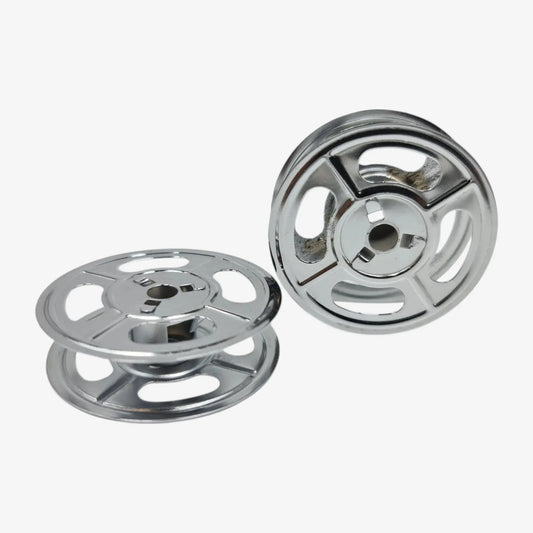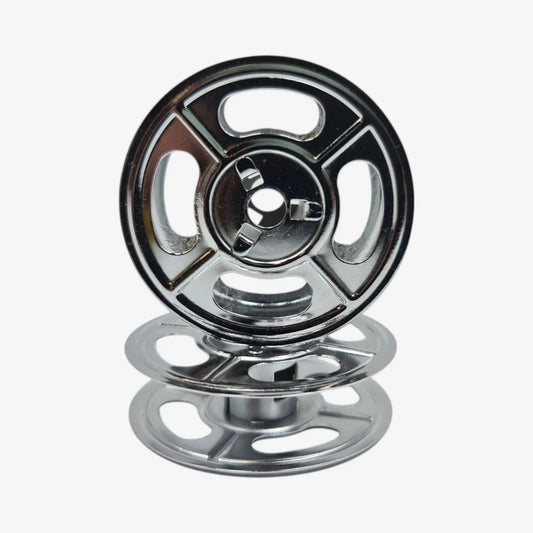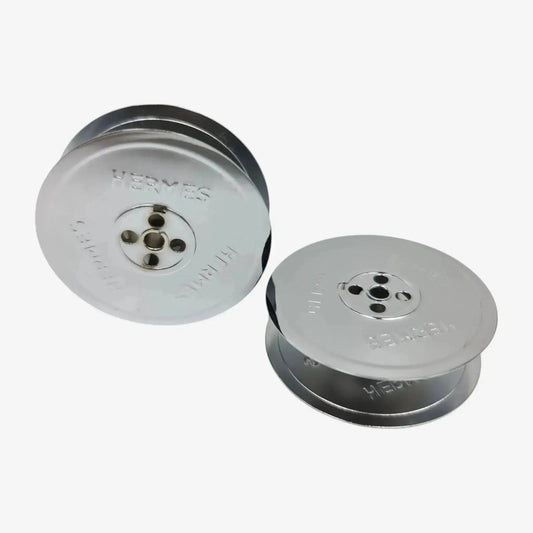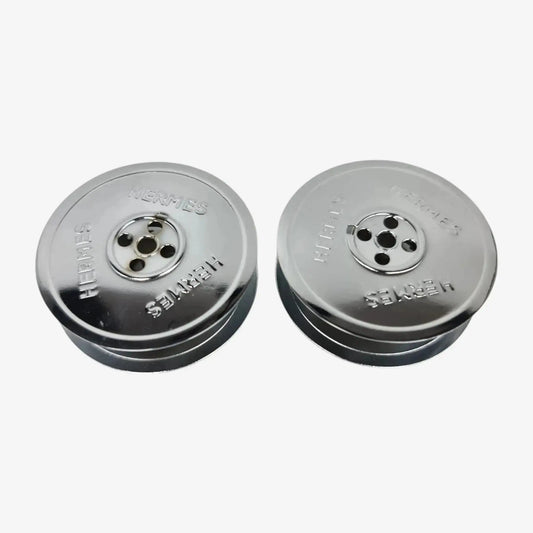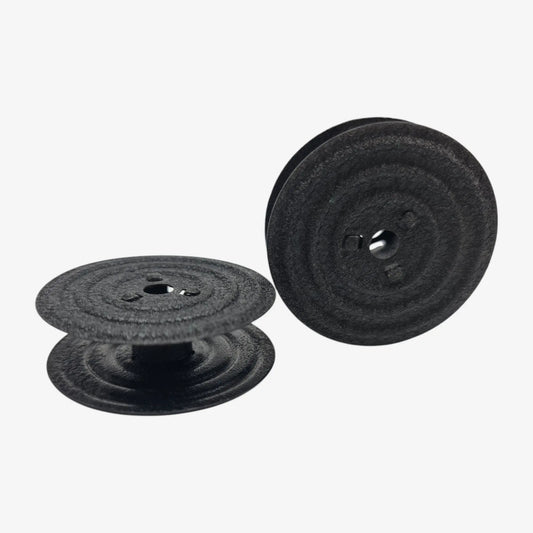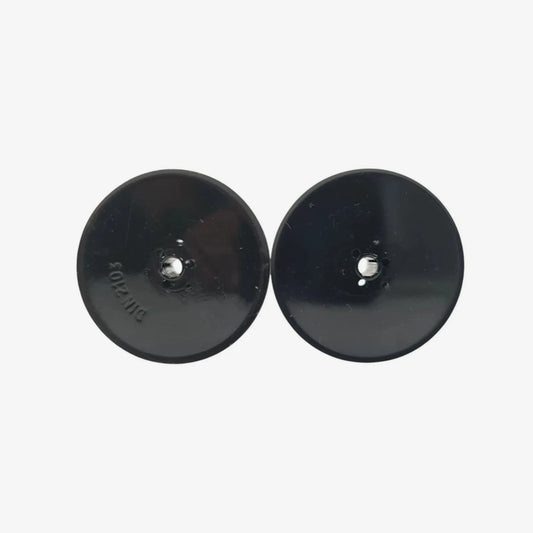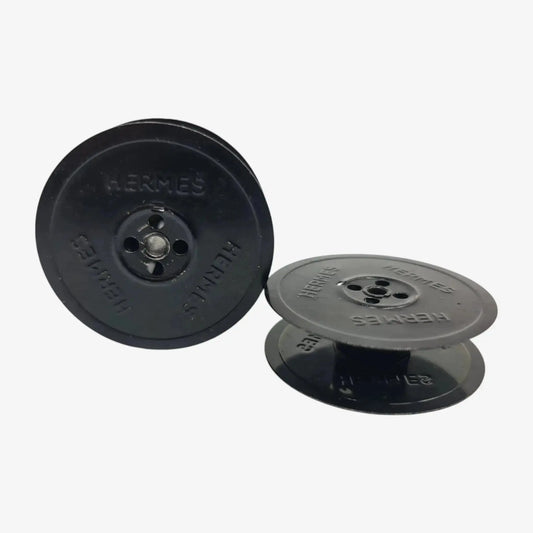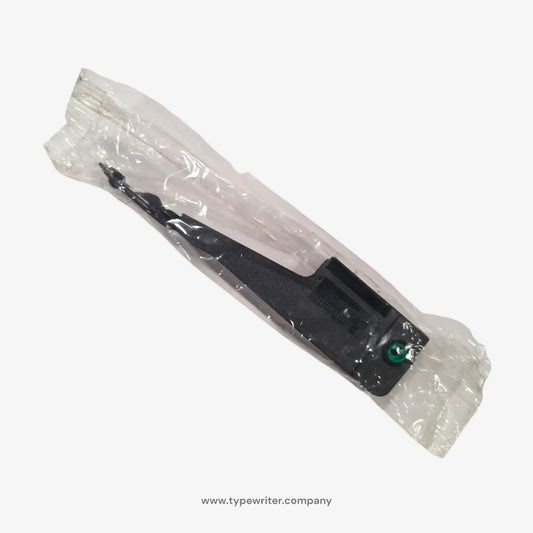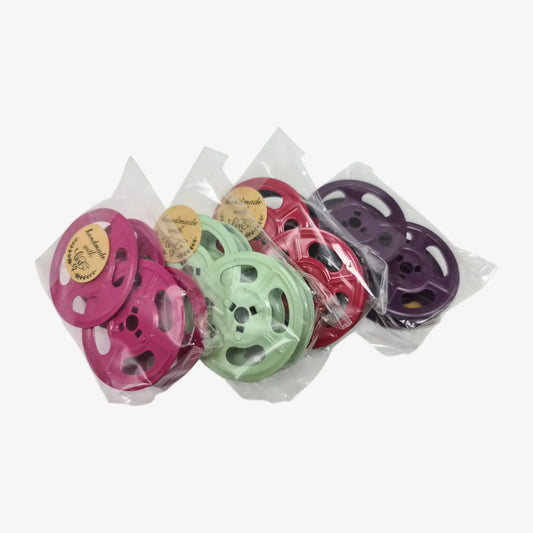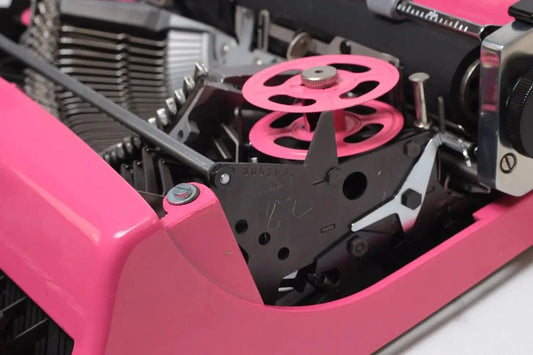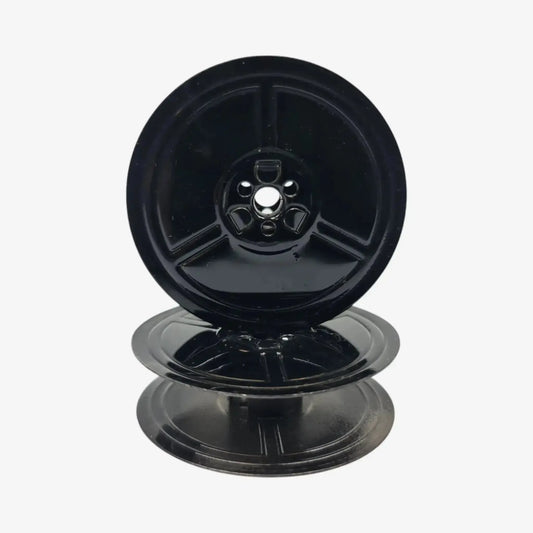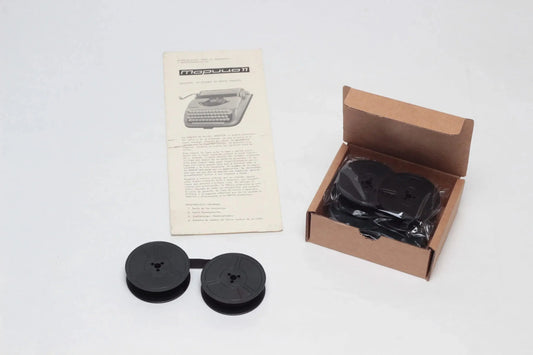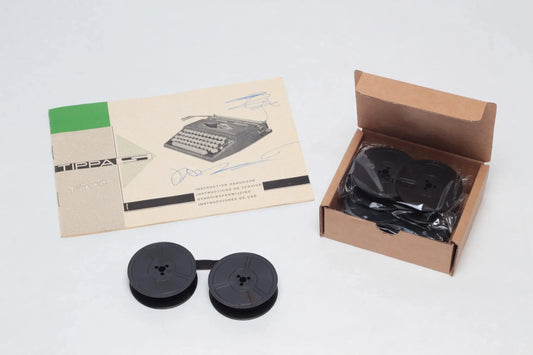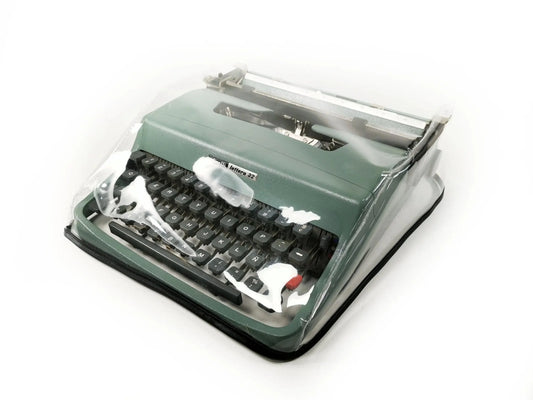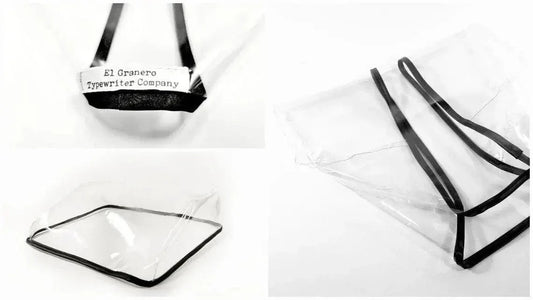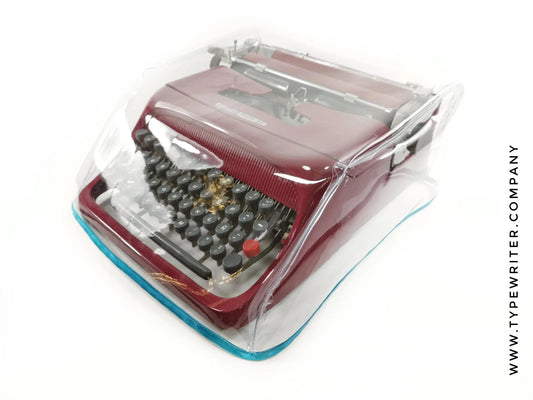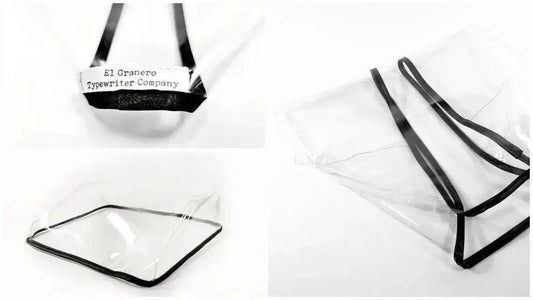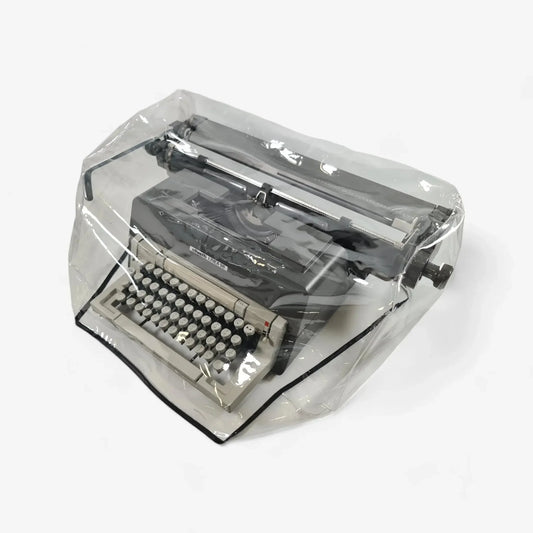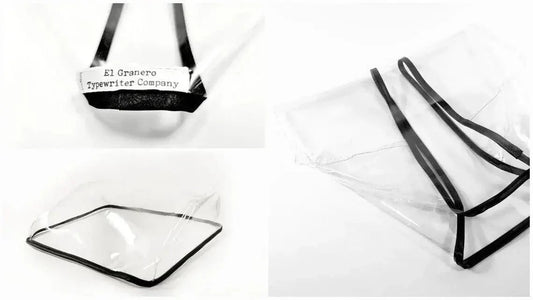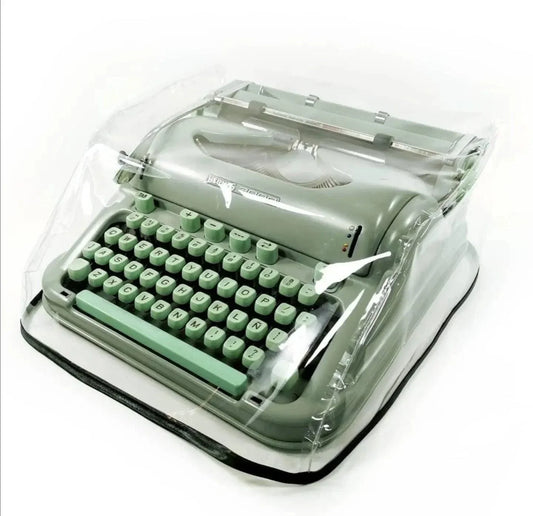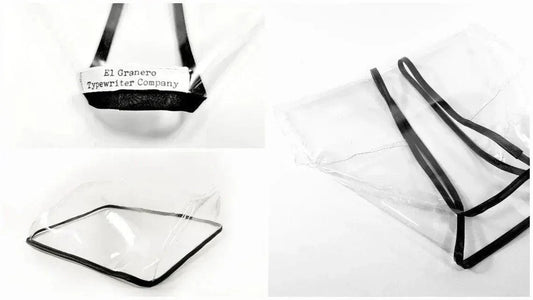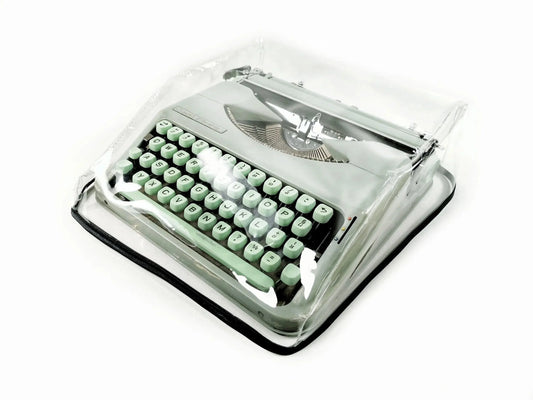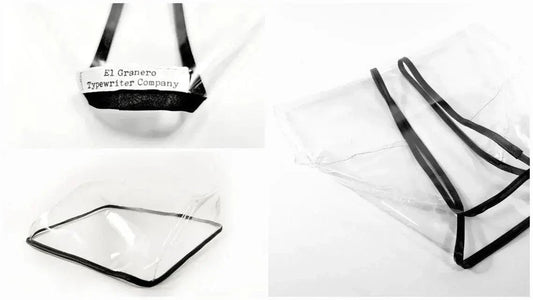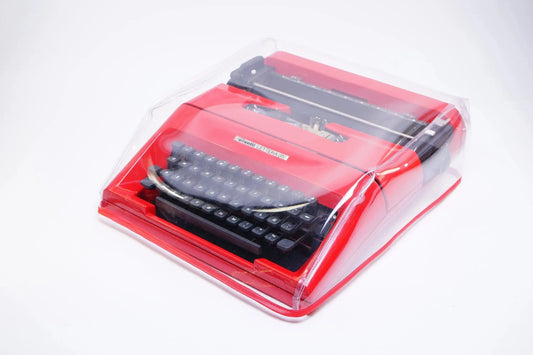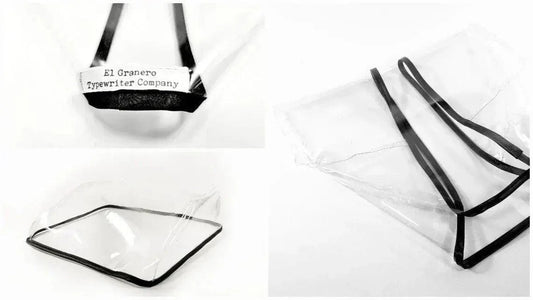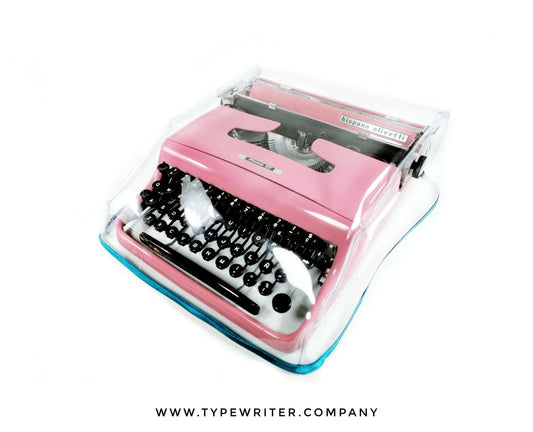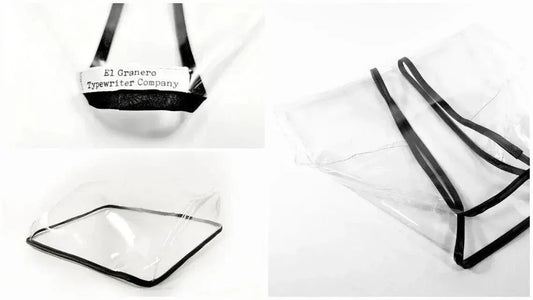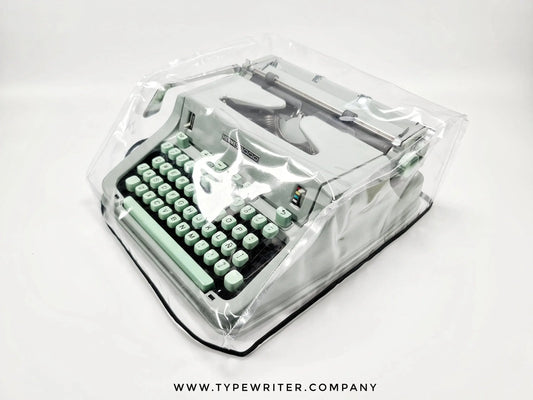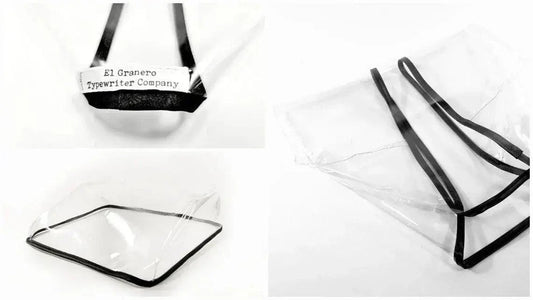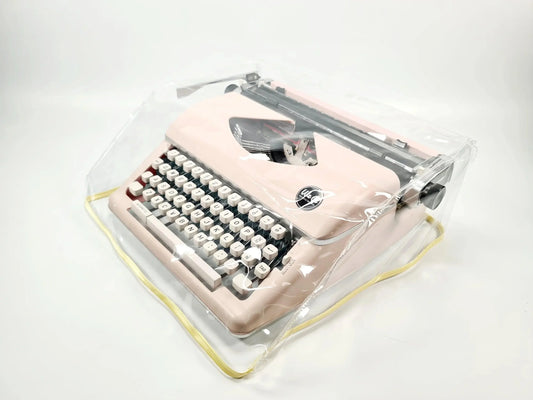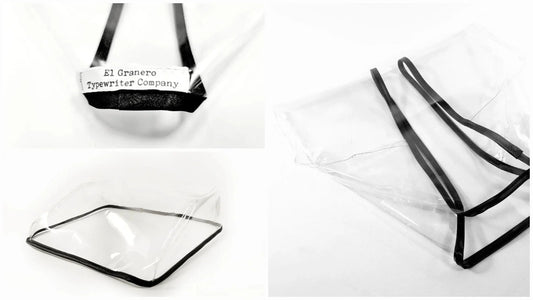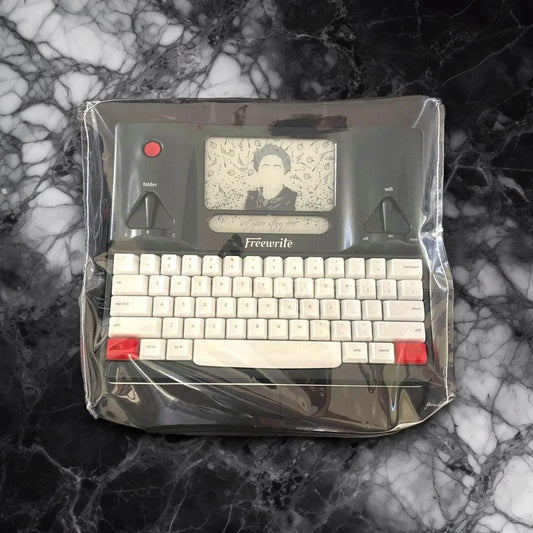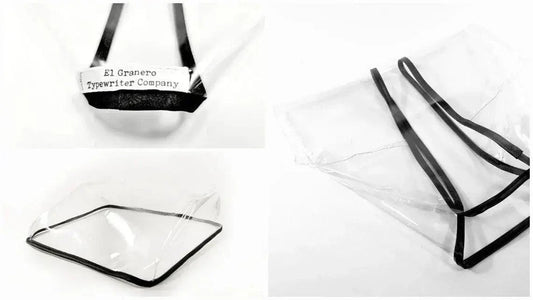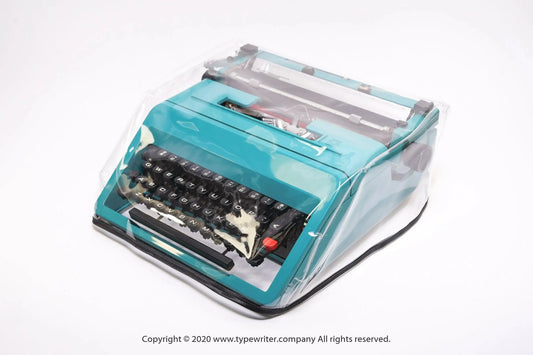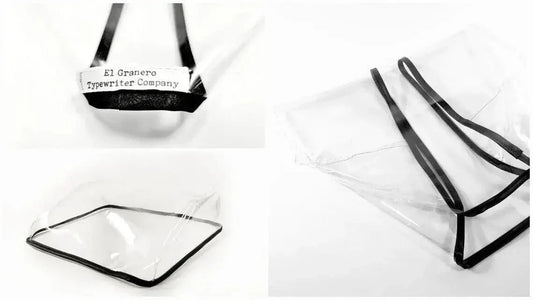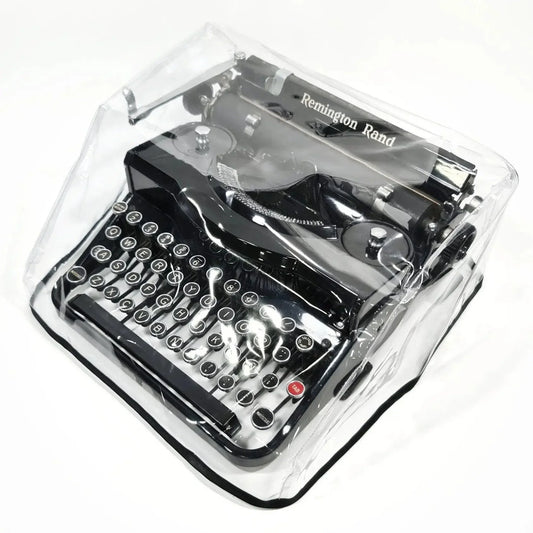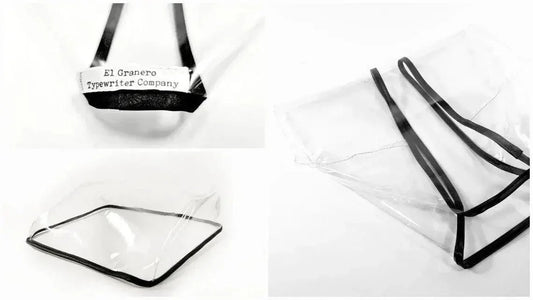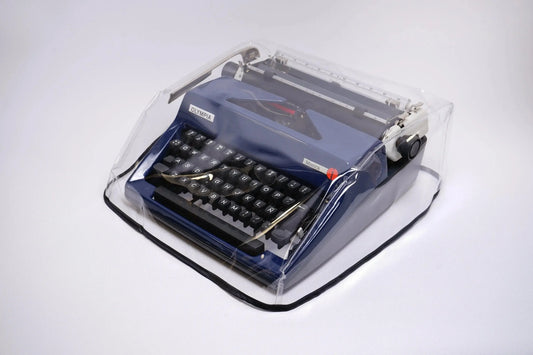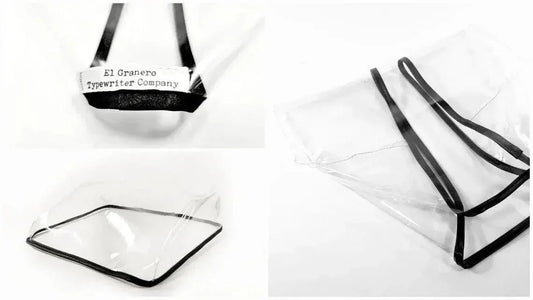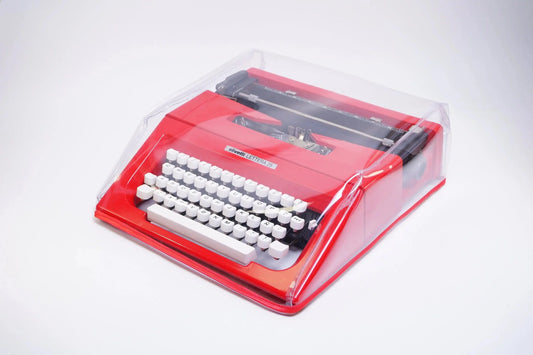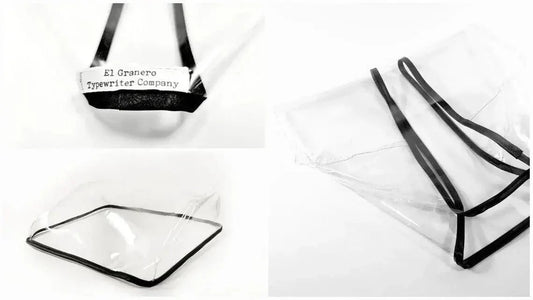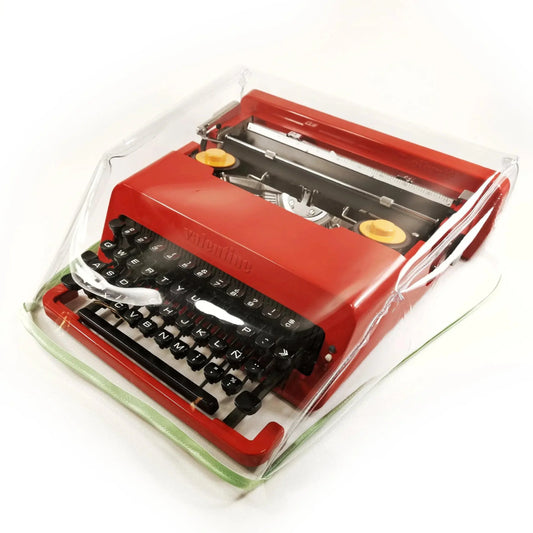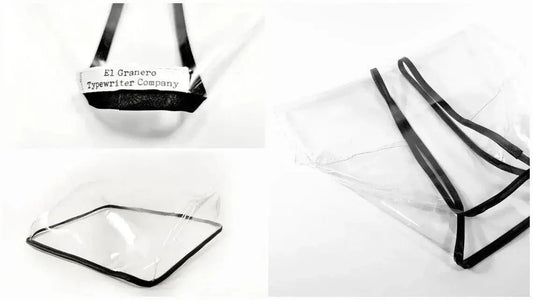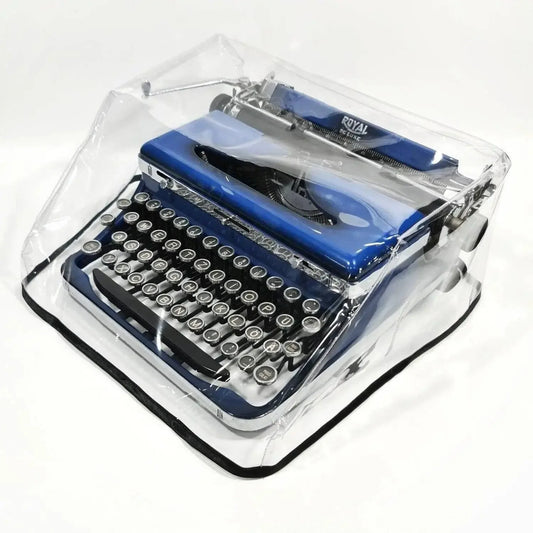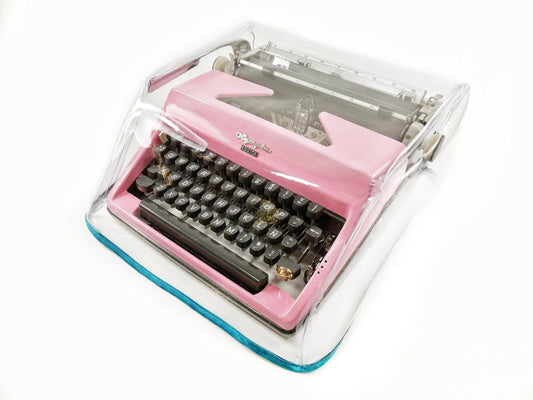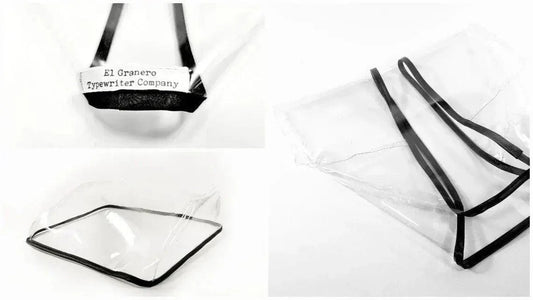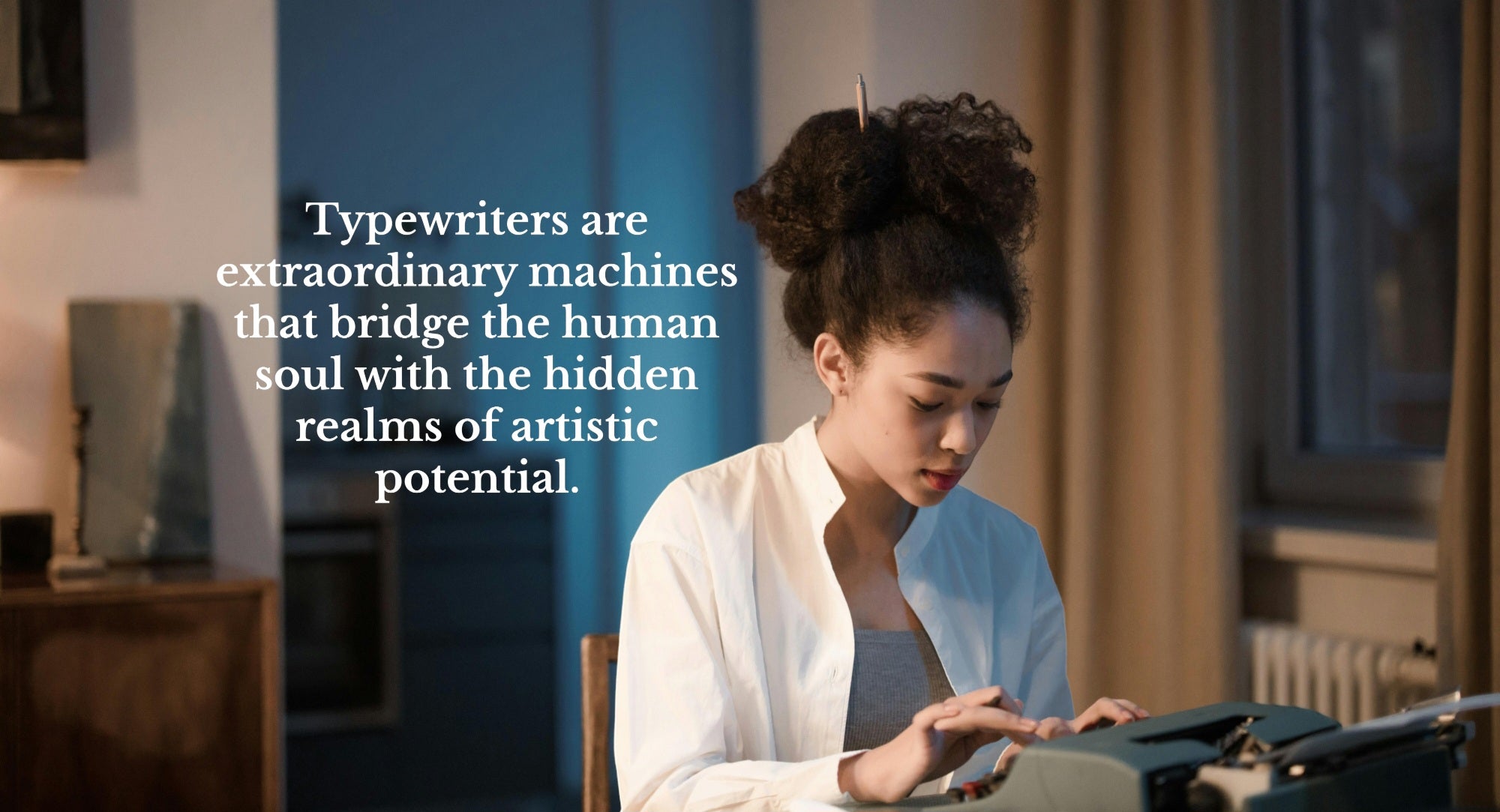
OLIVETTI LETTERA 32
The Client's Choice! ✪✪✪✪✪
The Olivetti Lettera 32 is a piece of history. Released in 1963 and masterfully designed by the renowned Mario Bellini. Exceptional portable mechanical typewriter embodies the robustness and professionalism of an era when precision and craftsmanship were paramount.
PRO Serviced - 2 Years Warranty
El Granero Typewriter.Company
Máquina de escribir manual Olivetti Lettera 32 Original Green Vintage revisada
Share








OUTLET up to -50% Discounts
-
Adler Contessa DeLuxe Typewriter, Portable Vintage QWERTY Typewriter
Precio habitual €200,00Precio habitualPrecio unitario / por€400,00Precio de oferta €200,00Agotado -
Antares Compact Typewriter, QWERTY working vintage typewriter
Precio habitual €125,00Precio habitualPrecio unitario / por€250,00Precio de oferta €125,00Oferta -
Máquina de escribir Adler Tippa S, vintage, color burdeos, QWERTZ, con servicio técnico
Precio habitual €210,00Precio habitualPrecio unitario / por€420,00Precio de oferta €210,00Oferta -
Máquina de escribir Triumph Contessa, color verde, vintage, AZERTY, revisada
Precio habitual €195,00Precio habitualPrecio unitario / por€390,00Precio de oferta €195,00Oferta -
Máquina de escribir Olivetti Studio 46, manual vintage, reacondicionada, teclado QWERTY
Precio habitual €160,00Precio habitualPrecio unitario / por€320,00Precio de oferta €160,00Oferta -
Máquina de escribir Nippo P-200, manual, con servicio técnico, QWERTY
Precio habitual €145,00Precio habitualPrecio unitario / por€290,00Precio de oferta €145,00Oferta -
Máquina de escribir Olympia Traveller De Luxe, portátil, revisada, manual, vintage
Precio habitual €135,00Precio habitualPrecio unitario / por€270,00Precio de oferta €135,00Oferta -
Erika Daro mod.34, máquina de escribir manual vintage gris claro y azul, revisada
Precio habitual €145,00Precio habitualPrecio unitario / por€290,00Precio de oferta €145,00Agotado -
Olympiette DeLuxe, máquina de escribir manual vintage de color gris, revisada
Precio habitual €145,00Precio habitualPrecio unitario / por€280,00Precio de oferta €145,00Oferta -
Olivetti Lettera 35, máquina de escribir manual vintage gris, restaurada
5.0 / 5.0
(1) 1 reseñas totales
Precio habitual €195,00Precio habitualPrecio unitario / por€390,00Precio de oferta €195,00Oferta -
Olivetti Lettera 25 Beige, máquina de escribir manual vintage, revisada
5.0 / 5.0
(1) 1 reseñas totales
Precio habitual €130,00Precio habitualPrecio unitario / por€260,00Precio de oferta €130,00Oferta -
Cenicero Hispano Olivetti, cuadrado, Lexicon 80, pieza de coleccionista
Precio habitual €40,00Precio habitualPrecio unitario / por€80,00Precio de oferta €40,00Agotado -
Cenicero Olivetti Hispano, Triángulo, Lexicon 80, Años 50, Objeto de Coleccionista
Precio habitual €45,00Precio habitualPrecio unitario / por€90,00Precio de oferta €45,00Agotado -
Olivetti Studio De Luxe, máquina de escribir manual vintage azul y gris, revisada
Precio habitual €195,00Precio habitualPrecio unitario / por€390,00Precio de oferta €195,00Oferta -
Olivetti Lettera 35 Beige, Máquina de escribir manual vintage, restaurada
5.0 / 5.0
(3) 3 reseñas totales
Precio habitual €190,00Precio habitualPrecio unitario / por€380,00Precio de oferta €190,00Oferta -
Olympia Traveller Beige, máquina de escribir manual vintage, restaurada
5.0 / 5.0
(2) 2 reseñas totales
Precio habitual €140,00Precio habitualPrecio unitario / por€280,00Precio de oferta €140,00Oferta -
Olivetti Studio 46 Azul, máquina de escribir manual vintage, restaurada
5.0 / 5.0
(5) 5 reseñas totales
Precio habitual €195,00Precio habitualPrecio unitario / por€390,00Precio de oferta €195,00Oferta -
Olivetti Dora Gray, máquina de escribir manual vintage, reacondicionada
5.0 / 5.0
(2) 2 reseñas totales
Precio habitual €130,00Precio habitualPrecio unitario / por€260,00Precio de oferta €130,00Oferta -
Máquina de escribir manual vintage Hermes Baby Gray, restaurada
Precio habitual €200,00Precio habitualPrecio unitario / por€400,00Precio de oferta €200,00Oferta -
Olympiette Deluxe White, máquina de escribir manual vintage, restaurada
Precio habitual €130,00Precio habitualPrecio unitario / por€260,00Precio de oferta €130,00Oferta
FEATURED COLLECTION
-
Royal Quiet, Very Rare Font and Colour, Vintage Manual Typewriter Serviced
Precio habitual €3.200,00Precio habitualPrecio unitario / por€3.200,00Precio de oferta €3.200,00 -
Máquina de Escribir Manual Vintage Adler Gabrielle 20, QWERTY, reacondicionada
Precio habitual €400,00Precio habitualPrecio unitario / por -
Máquina de escribir manual vintage Hermes Baby Grey, portátil, reacondicionada
Precio habitual €450,00Precio habitualPrecio unitario / por -
Underwood 319E, máquina de escribir manual vintage, reacondicionada
Precio habitual €325,00Precio habitualPrecio unitario / por -
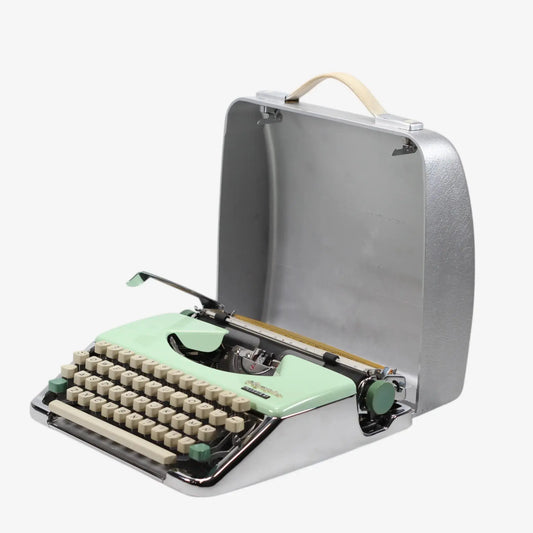
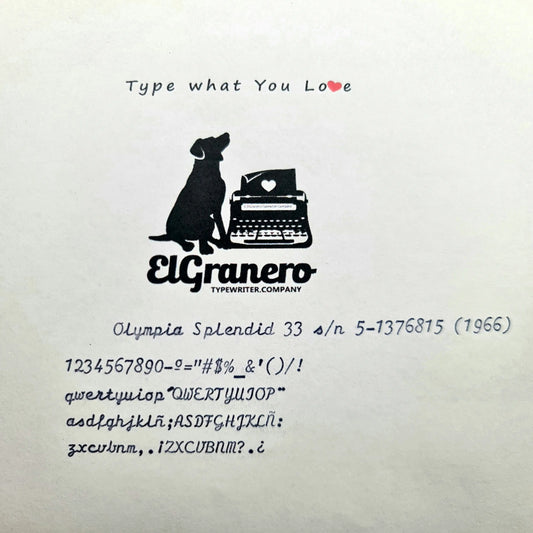
¡Fuente cursiva! ¡Cromada! Máquina de escribir Olympia Splendid vintage, manual, verde, restaurada.
Precio habitual €0,00Precio habitualPrecio unitario / por -
Máquina de escribir manual Olympia Splendid vintage, plateada, verde, QWERTY, restaurada
Precio habitual €1.050,00Precio habitualPrecio unitario / por -
Hermes Media 3 Seafoam Green, máquina de escribir manual vintage, revisada
Precio habitual €950,00Precio habitualPrecio unitario / por -
Máquina de escribir eléctrica CasioWriter CW-11, Vintage
5.0 / 5.0
(1) 1 reseñas totales
Precio habitual €390,00Precio habitualPrecio unitario / por€195,00Precio de oferta €390,00 -
Máquina de escribir Olympia Splendid, cromada, teclado QWERTY, restaurada
Precio habitual €1.050,00Precio habitualPrecio unitario / por -
Máquina de escribir Erika 5 Gold, manual vintage, rara, con servicio profesional.
Precio habitual €1.170,00Precio habitualPrecio unitario / por -
Máquina de escribir Olivetti Lettera 35, roja, antigua, manual, restaurada
Precio habitual €420,00Precio habitualPrecio unitario / por -
Máquina de escribir Olivetti Lettera 35 restaurada, manual, color negro y verde
Precio habitual €520,00Precio habitualPrecio unitario / por -
Máquina de escribir Olivetti Lettera 32 negra, restaurada, vintage, manual
Precio habitual €390,00Precio habitualPrecio unitario / por -
Olivetti Lettera 32, máquina de escribir antigua, manual, color amarillo, restaurada
5.0 / 5.0
(2) 2 reseñas totales
Precio habitual €390,00Precio habitualPrecio unitario / por -
Olivetti Valentine S, máquina de escribir vintage manual roja, revisada
Precio habitual €520,00Precio habitualPrecio unitario / por -
Olivetti Dora, máquina de escribir vintage, portátil y manual, color negro, restaurada
4.67 / 5.0
(6) 6 reseñas totales
Precio habitual €360,00Precio habitualPrecio unitario / por -
Olivetti Lettera 35 Negro Mate, Máquina de Escribir Manual Vintage, Restaurada
Precio habitual €455,00Precio habitualPrecio unitario / por -
Máquina de escribir manual vintage Olivetti Studio 45 Turquoise, revisada
5.0 / 5.0
(13) 13 reseñas totales
Precio habitual €390,00Precio habitualPrecio unitario / por -
Olivetti Lettera 35 Yellow Vintage, máquina de escribir manual, restaurada
5.0 / 5.0
(6) 6 reseñas totales
Precio habitual €450,00Precio habitualPrecio unitario / por -
Máquina de escribir manual antigua Olympia Traveller Cherry Red, restaurada
5.0 / 5.0
(6) 6 reseñas totales
Precio habitual €325,00Precio habitualPrecio unitario / por
SPOOLS & RIBBONS
-
Carretes de cinta metálica universales amarillos para máquinas de escribir
Precio habitual €50,00Precio habitualPrecio unitario / por -
Carretes de cinta universales de metal rojo/negro para máquinas de escribir
Precio habitual €35,00Precio habitualPrecio unitario / por -
Carretes de cinta universales de metal turquesa para máquinas de escribir
Precio habitual €50,00Precio habitualPrecio unitario / por -
Carretes de cinta universales de metal azul marino para máquinas de escribir
Precio habitual €50,00Precio habitualPrecio unitario / por -
Carretes de cinta universales de metal burdeos para máquinas de escribir
Precio habitual €50,00Precio habitualPrecio unitario / por -
Carretes de cinta metálica vintage amarilla para máquinas de escribir Hermes
Precio habitual €65,00Precio habitualPrecio unitario / por -
Carretes de cinta de metal rojo plateado para máquinas de escribir Hermes
Precio habitual €120,00Precio habitualPrecio unitario / por -
Carretes de cinta de metal plateado cromado para máquinas de escribir alemanas, DIN 2103
Precio habitual €110,00Precio habitualPrecio unitario / por -
Carretes de cinta de metal chapados en oro de 24 quilates para máquinas de escribir Hermes
Precio habitual €150,00Precio habitualPrecio unitario / por -
Carretes de cinta universales de metal plateado cromado para máquinas de escribir
Precio habitual €90,00Precio habitualPrecio unitario / por -
Carretes de cinta de metal plateado cromado para máquinas de escribir Hermes
Precio habitual €125,00Precio habitualPrecio unitario / por -
Carretes de cinta de metal vintage originales - Máquina de escribir Olivetti Studio 42/46
Precio habitual €65,00Precio habitualPrecio unitario / por -
Carretes de cinta metálicos vintage universales - Máquinas de escribir alemanas DIN 2103
Precio habitual €40,00Precio habitualPrecio unitario / por -
Carretes de cinta de metal negro vintage originales para máquinas de escribir Hermes
Precio habitual €75,00Precio habitualPrecio unitario / por -
Cinta de máquina de escribir Olivetti Lettera 10, 12 ORIGINAL Y RARA - Cartucho Lettercart
Precio habitual €0,00Precio habitualPrecio unitario / por -
Carretes metálicos vintage personalizados para máquina de escribir, cintas de tinta para máquina de escribir
Precio habitual €39,00Precio habitualPrecio unitario / por -
Carretes de cinta para máquinas de escribir alemanas, originales, de metal negro, vintage, DIN 2103
Precio habitual €45,00Precio habitualPrecio unitario / por -
Nueva cinta de tinta universal para máquinas de escribir Maritsa
Precio habitual €13,00Precio habitualPrecio unitario / por -
Nueva cinta de tinta universal para máquinas de escribir Silver Reed y Silverette
Precio habitual €13,00Precio habitualPrecio unitario / por -
Cinta de tinta universal para máquinas de escribir Tippa / Adler / Triumph, nueva
Precio habitual €13,00Precio habitualPrecio unitario / por
DUST COVERS
-
Funda protectora transparente pequeña para máquina de escribir Olivetti Lettera 32/22
4.92 / 5.0
(12) 12 reseñas totales
Precio habitual A partir de €45,00Precio habitualPrecio unitario / por -
Funda protectora para máquina de escribir Olivetti Studio 44, transparente, tamaño MEDIANO
5.0 / 5.0
(4) 4 reseñas totales
Precio habitual A partir de €52,00Precio habitualPrecio unitario / por -
Funda protectora transparente XL para máquina de escribir Olivetti Linea 98
5.0 / 5.0
(3) 3 reseñas totales
Precio habitual A partir de €80,00Precio habitualPrecio unitario / por -
Funda protectora para máquina de escribir MEDIUM Olympia SM, Monica, transparente
Precio habitual A partir de €52,00Precio habitualPrecio unitario / por -
Funda protectora transparente para máquina de escribir Hermes 3000 (tapa redonda)
Precio habitual A partir de €52,00Precio habitualPrecio unitario / por -
Funda protectora transparente para máquina de escribir Hermes Baby/Rocket
5.0 / 5.0
(1) 1 reseñas totales
Precio habitual A partir de €45,00Precio habitualPrecio unitario / por -
Funda protectora para máquina de escribir Olivetti Lettera 35/35i (tamaño mediano)
5.0 / 5.0
(3) 3 reseñas totales
Precio habitual A partir de €52,00Precio habitualPrecio unitario / por -
OUTLET XL Funda transparente para máquina de escribir estándar
Precio habitual €25,00Precio habitualPrecio unitario / por€80,00Precio de oferta €25,00Oferta -
Funda protectora transparente pequeña para máquina de escribir Olivetti Lettera/Pluma 22
5.0 / 5.0
(1) 1 reseñas totales
Precio habitual A partir de €45,00Precio habitualPrecio unitario / por -
Funda protectora transparente para máquina de escribir Hermes 3000 (tapa cuadrada)
5.0 / 5.0
(1) 1 reseñas totales
Precio habitual A partir de €52,00Precio habitualPrecio unitario / por -
Funda transparente para máquina de escribir mediana para We'R Memory Keepers
Precio habitual A partir de €52,00Precio habitualPrecio unitario / por -
Funda protectora transparente pequeña para máquina de escribir Freewrite
Precio habitual A partir de €45,00Precio habitualPrecio unitario / por -
Funda protectora transparente para máquina de escribir Olivetti Studio 45 (tamaño mediano)
4.5 / 5.0
(4) 4 reseñas totales
Precio habitual A partir de €52,00Precio habitualPrecio unitario / por -
Funda protectora para máquina de escribir Remington, tamaño mediano, transparente
Precio habitual A partir de €52,00Precio habitualPrecio unitario / por -
Funda protectora para máquina de escribir Olympia SM, transparente, tamaño MEDIANO
Precio habitual A partir de €52,00Precio habitualPrecio unitario / por -
Funda protectora para máquina de escribir MEDIANA Olivetti Lettera 25 / College Clear
5.0 / 5.0
(4) 4 reseñas totales
Precio habitual A partir de €52,00Precio habitualPrecio unitario / por -
Funda protectora transparente de tamaño mediano para máquina de escribir Olivetti Valentine
Precio habitual A partir de €52,00Precio habitualPrecio unitario / por -
Funda protectora transparente de tamaño mediano para máquina de escribir Royal P, A, O
5.0 / 5.0
(2) 2 reseñas totales
Precio habitual A partir de €52,00Precio habitualPrecio unitario / por -
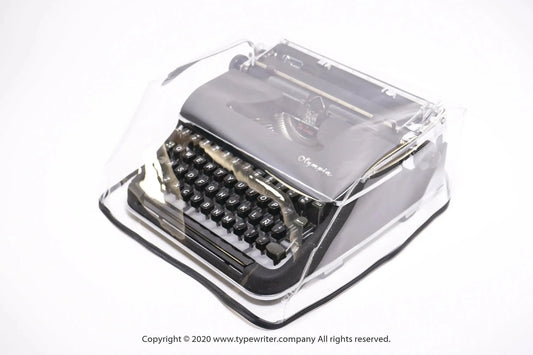
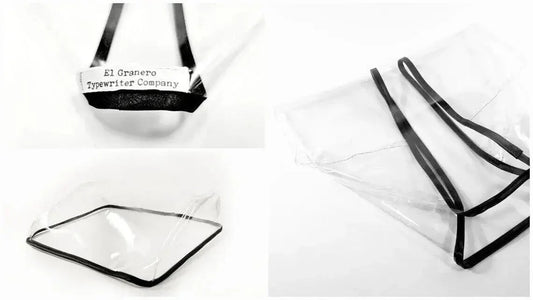
Funda protectora transparente para máquina de escribir Olympia SM 1 - 2 - 3 - 4 - 5 (tamaño mediano)
4.94 / 5.0
(18) 18 reseñas totales
Precio habitual A partir de €52,00Precio habitualPrecio unitario / por -
Funda transparente para máquina de escribir Olympia Monica SM
Precio habitual A partir de €52,00Precio habitualPrecio unitario / por
El Granero Typewriter.Company
Máquina de escribir vintage Olivetti Studio 46(42) en negro brillante, renovada
Share










More Typewriter Collections, Small Gifts and Accessories
Ver todo-
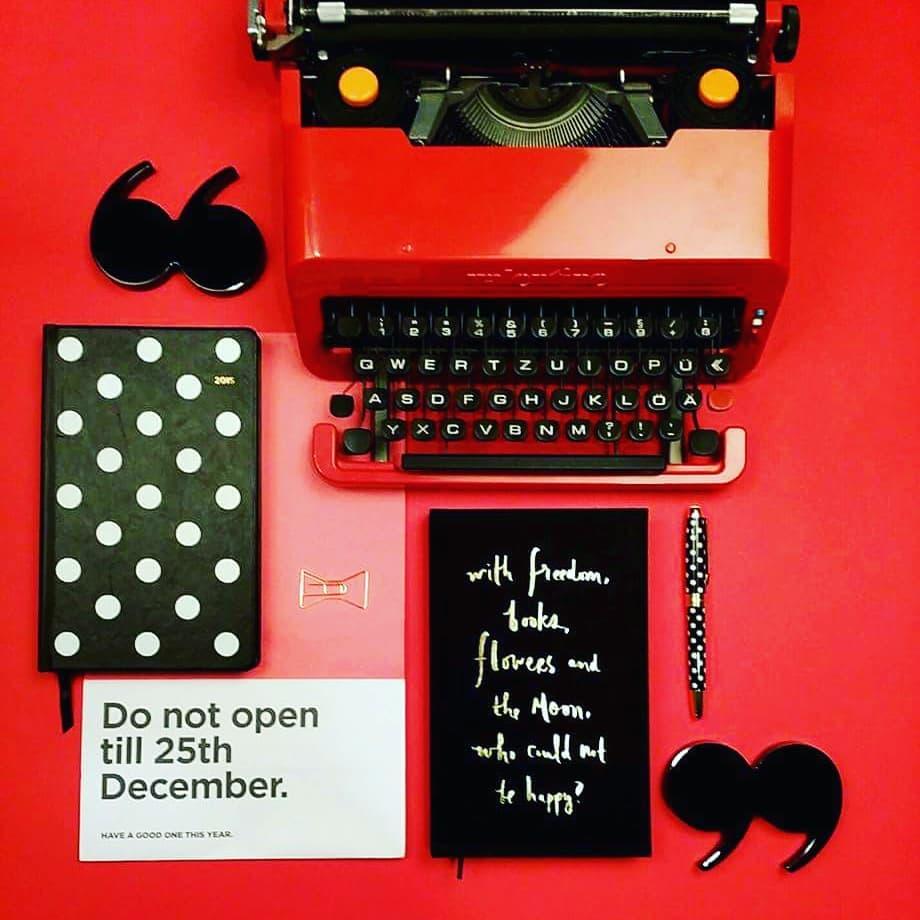
NUEVO STOCK
Nuevo stock Descubra nuestra nueva colección de máquinas de escribir, con joyas...
-
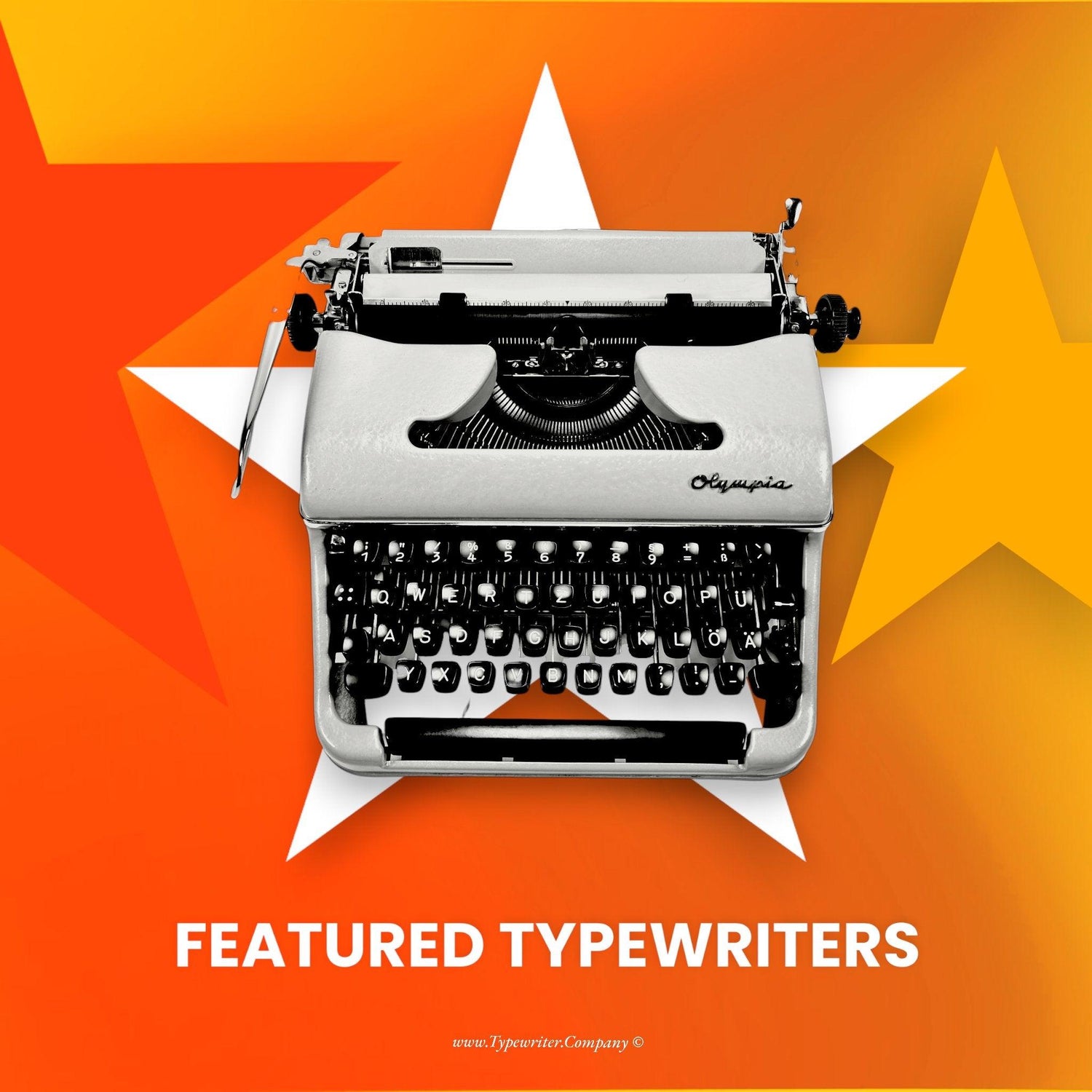
MÁQUINAS DE ESCRIBIR DESTACADAS
Máquinas de Escribir Destacadas Nos complace presentar nuestra colección de máquinas de...
-
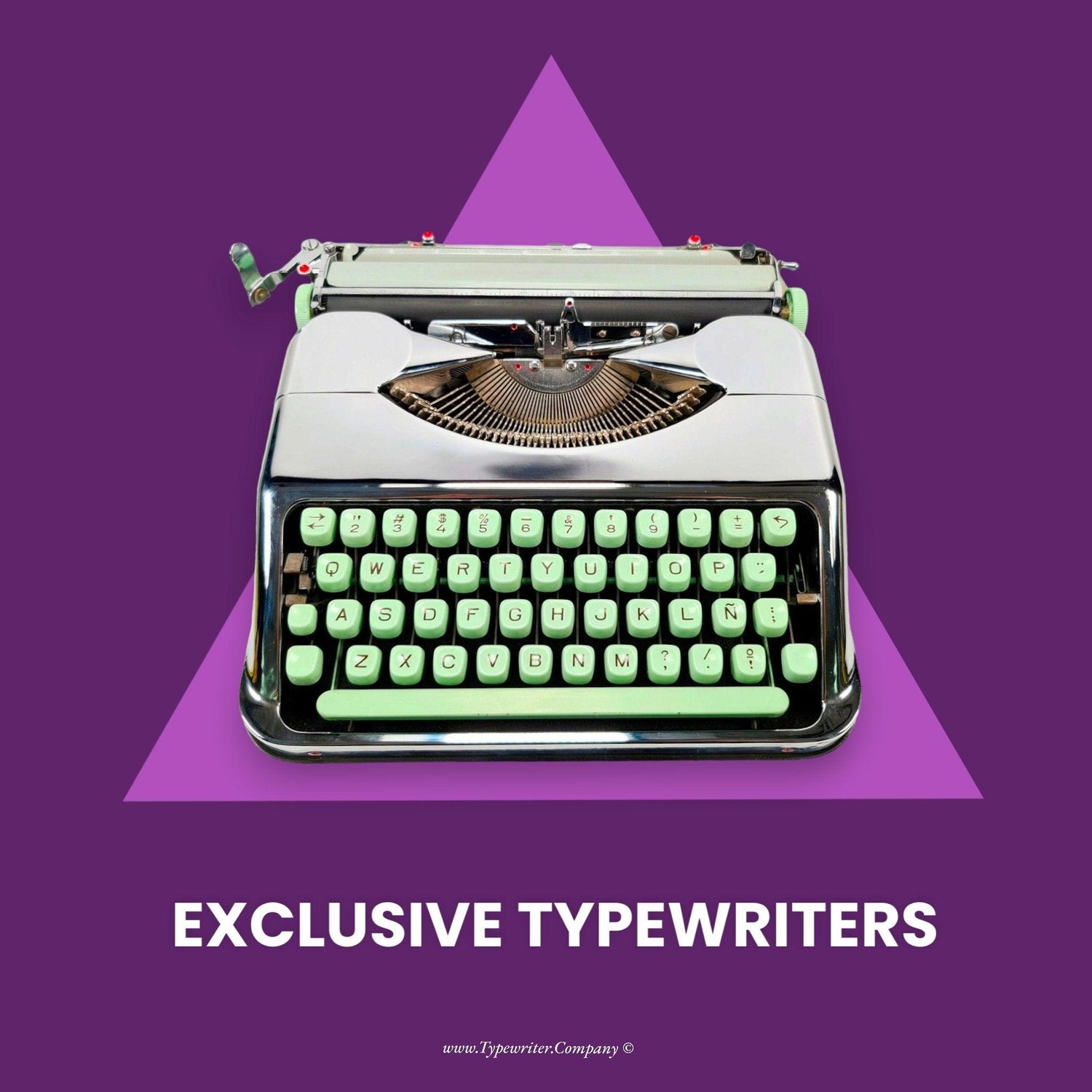
MÁQUINAS DE ESCRIBIR EXCLUSIVAS
Máquinas de escribir exclusivas Descubra nuestras exclusivas máquinas de escribir, incluyendo modelos...
-

MÁQUINAS DE ESCRIBIR PORTÁTILES
Máquinas de escribir portátiles Explore nuestra colección de máquinas de escribir portátiles...
-
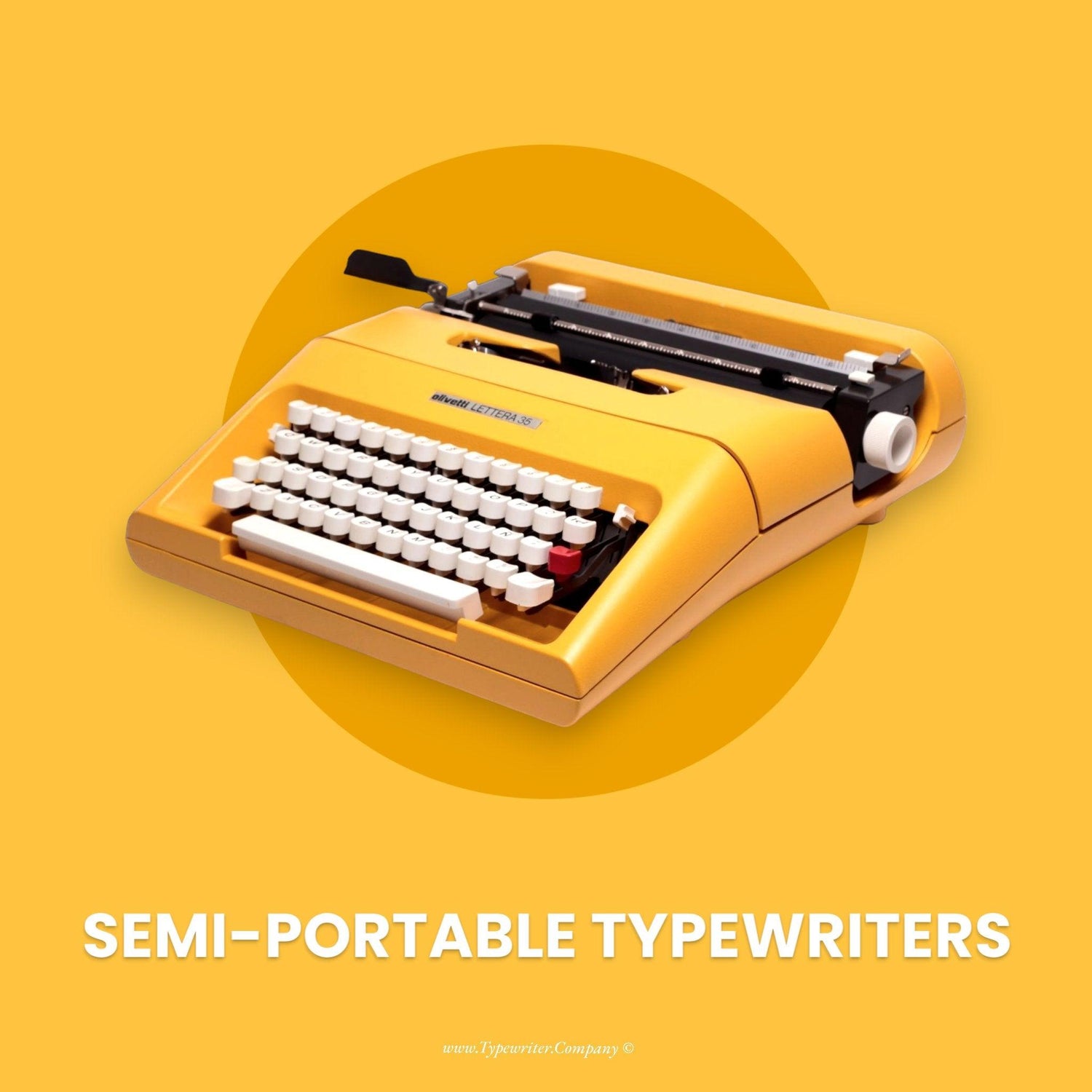
MÁQUINAS DE ESCRIBIR SEMIPORTÁTILES
Máquinas de Escribir Semiportátiles Las máquinas de escribir semiportátiles combinan la portabilidad...
-
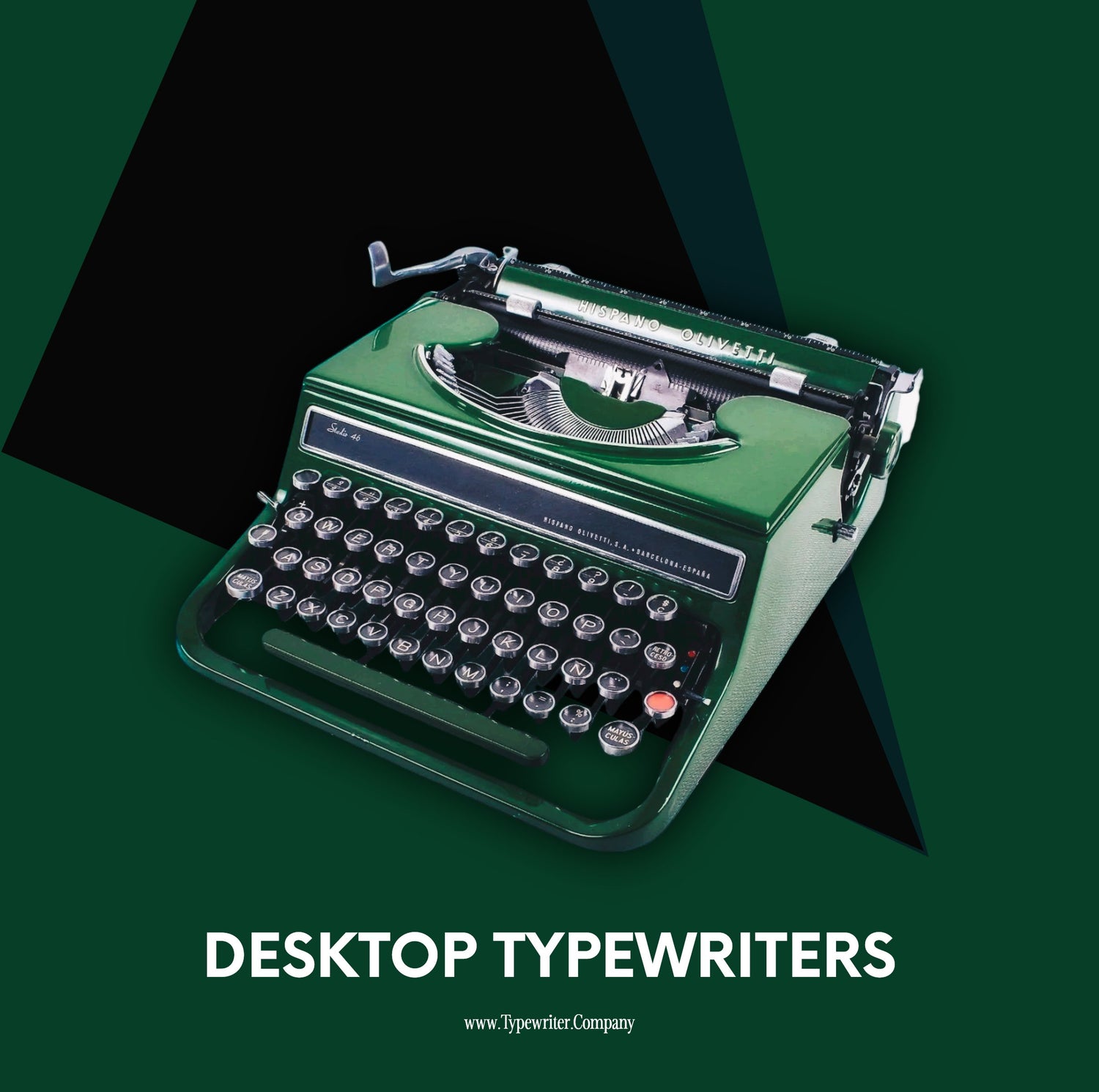
MÁQUINAS DE ESCRIBIR DE ESCRITORIO
Máquinas de Escribir de Escritorio Descubra nuestra exclusiva colección de máquinas de...
-

CINTAS PARA MÁQUINA DE ESCRIBIR
Cintas para Máquina de Escribir Explore nuestra selección de cintas para máquina...
-

FUNDAS PARA MÁQUINA DE ESCRIBIR
Fundas para máquinas de escribir Proteja su máquina de escribir con nuestra...
-
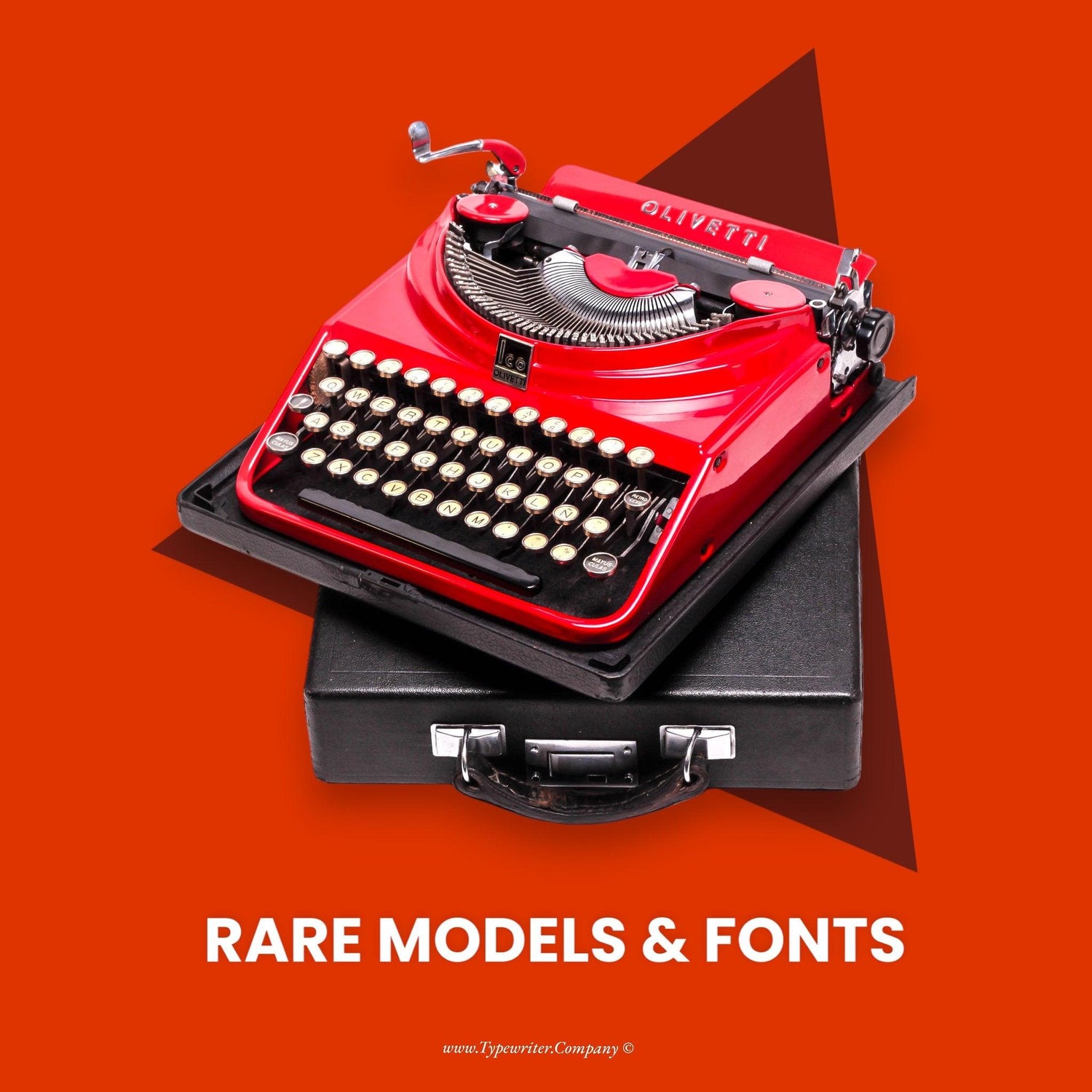
MODELOS Y FUENTES DE MÁQUINAS DE ESCRIBIR RARAS
Modelos y Fuentes de Máquinas de Escribir raras Explora nuestra exclusiva colección...
-
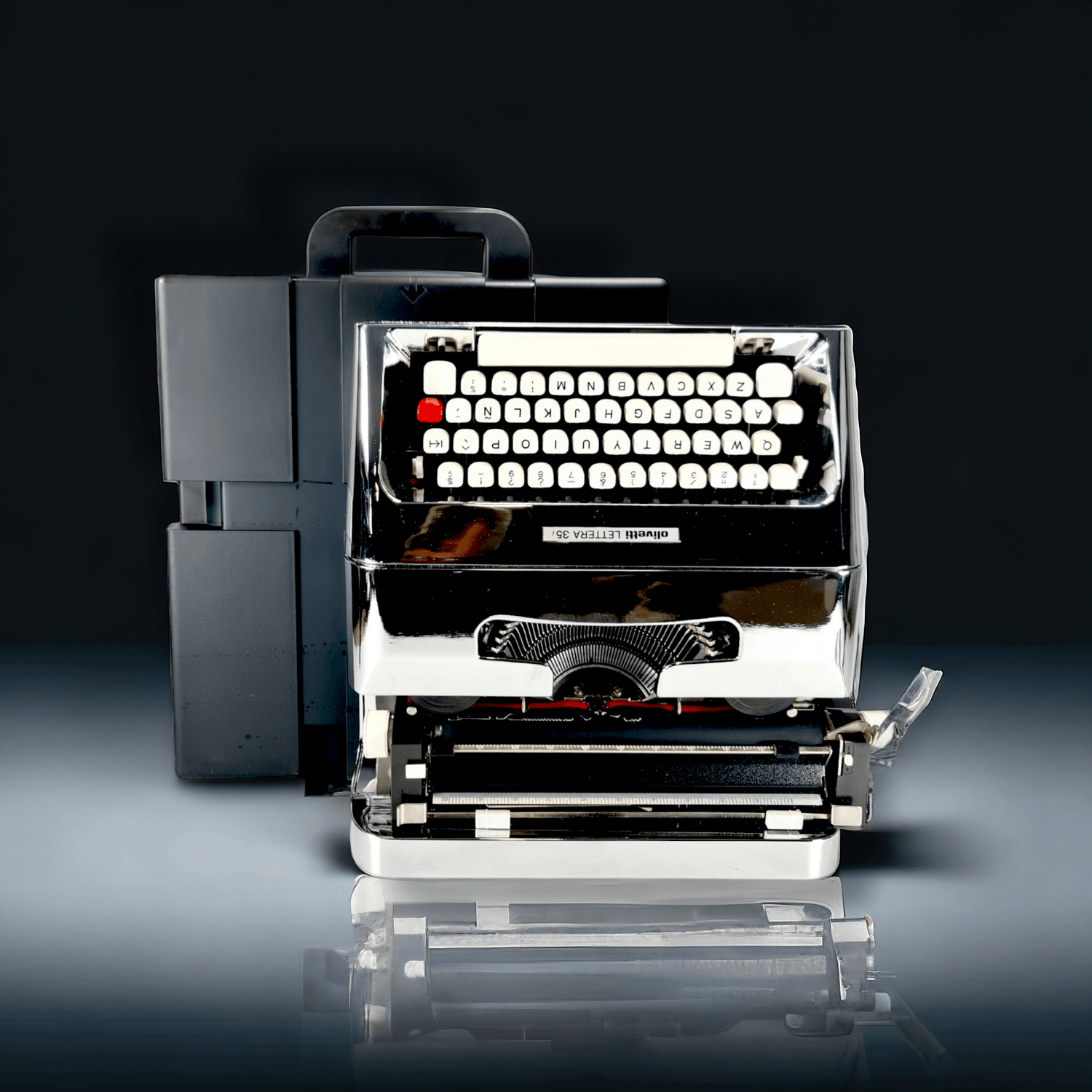
MÁQUINAS DE ESCRIBIR ICÓNICAS OLIVETTI
MÁQUINAS DE ESCRIBIR ICÓNICAS OLIVETTI Descubra el encanto y la personalidad de...
-

PIEZAS DE MÁQUINA DE ESCRIBIR
Piezas de Máquina de Escribir Explora nuestra colección premium de piezas de...
Blog [One Keystroke at a Time] - New Post!
Ver todo-
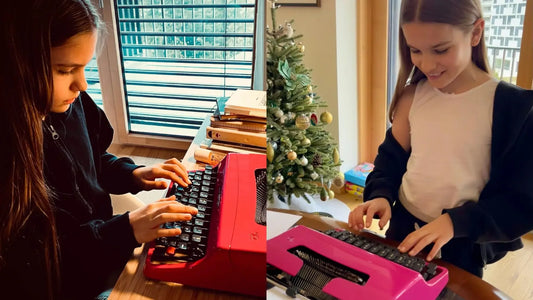
La magia de las máquinas de escribir: perspecti...
En esta publicación, compartimos la inspiradora historia de Louise, una niña de 12 años apasionada por la danza y la narración. Louise explica por qué prefiere escribir a máquina en...
La magia de las máquinas de escribir: perspecti...
En esta publicación, compartimos la inspiradora historia de Louise, una niña de 12 años apasionada por la danza y la narración. Louise explica por qué prefiere escribir a máquina en...
-
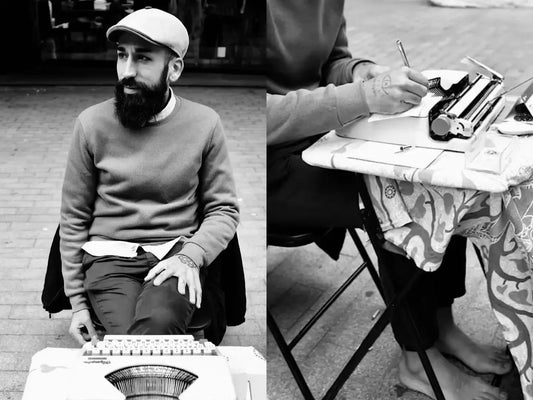
Entrevista a Darío Peinado, el poeta callejero ...
Entrevista a Darío Peinado, el poeta callejero errante de España. Poesía para extraños - Versos descalzos Darío Peinado no es un poeta al uso. Descalzo y sin cargas, recorre las...
1 comentarioEntrevista a Darío Peinado, el poeta callejero ...
Entrevista a Darío Peinado, el poeta callejero errante de España. Poesía para extraños - Versos descalzos Darío Peinado no es un poeta al uso. Descalzo y sin cargas, recorre las...
1 comentario

Let customers speak for us
from 571 reviews
Ania has been super helpful right from the start. She provided a wealth of information on typewriters, answering all my queries with patience.
The packaging for the shipping was super secure. I highly recommend The Typerwriter Company!

Great design, perfect function. Looked a while for this one and am happy now to write on it. Inspires me. Thanks to the work of typewriter/co.! Meinrad Braun

We. Are. Obsessed! The customer service, the extra care and thought put into it because it was a surprise/gift was unexpected. Not only that, it came very well packaged, and with a manual copy and everything! We love it so very much, thank you thank you! Now we just need to figure out a name for it <3

My Olivetti typewriter was delayed in shipping (through no fault of the seller) but when it arrived it was expertly packaged for shipping and arrived in excellent condition. When I contacted the seller about the delay in its arrival, the customer service immediately contacted the shipper and they were able to give me an updated estimate on the arrival date.
The typewriter is beautiful and fun to use.

One of the most amazing sellers I have ever worked with they packaged amazingly and made it so special for my wife birthday thank you so much would recommend to anyone looking for an amazing seller

This is an absolutely stunning typewriter! It is in excellent condition, and the sellers included a Tolkien quote and a cute typewriter pin! It comes with an instruction manual, which was helpful as this is my first typewriter.
The shipping to the USA took approximately 1.5 months longer than predicted. I don't blame the sellers for this, as they posted the typewriter in the post VERY quickly. The wait was worth it. Fortunately this typewriter just for personal use - if purchased as a gift, buy VERY early.
The only bummer was the installed typewriter ribbon being almost completely dried out - I purchased a new typewriter ribbon today but am sad that I can't use my typewriter until it arrives.
The sellers are AMAZING. They have been very helpful and kind. This is the only shop I'd consider for purchasing a typewriter.

Anita and Jacek were determined to make sure the typewriter arrived safely, and they took the time to call and troubleshoot some shilling issues. When the typewriter finally arrived, it was everything I hoped it would be. It was in beautiful condition and worked like a dream. I can't wait to get full use out of it!

This typewriter is absolutely amazing and it was immaculately packed. There were some issues with fed ex but it was nothing to do with the seller. The sellers are very kind and patient and had no problems accommodating me and kept me updated all of the way!

Great for my IBM Selectric Model 72 on my desk. Keeps it dust free while displaying it beautifully, perfectly clear heavy duty vinyl, nicely stitched seams with a black bottom border, very high quality!

This is my first Hermes Baby, It is in good condition it is clean and pretty ! really an ultraportable one ,ready to use .Thanks to Ania of El Granero for keeping track of the shipment ,for packing it securely and giving an additonal extra touch of wrapping in time for Christmas .I really appreciate it .Of course for the wonderful cute typweriter Pin and dust cover freebies ! 😍😍

I have always wanted a good typewriter in my adult life, and I have found one. The quality of the typewriter is superb. You wouldn't think it had been reconditioned. I am over the moon with it. If I should ever need another I shall definitely be shopping here.

I received my yellow Olympia Monica typewriter this week and I have to say I was very pleasantly surprised with the quality of the work of El Granero. The machine was perfectly packed and it arrived in perfect condition after its long trip from Malaga, Spain to Georgia in the US.
The machine looks almost brand new and it works flawlessly, which is amazing considering it is more than 50 years old.
I would definitely buy from El Granero again, and I will highly recommend them to anyone looking to purchase a vintage typewriter.
Thank you, Ania and Jacek for the amazing work you do!

The typewriter came in amazing packaging to ensure as much care during the shipping process as possible. A few issues with shipping occurred, but Ania was always so helpful and went above and beyond to fix the issue. I am very happy with my purchase and would buy from Ania and Jacek again!

Type writer is beautiful and arrived after nearly 2 months. If you're looking to purchase it asap, do not expect it to arrive quickly as it does get cleaned and refurbished first, then it gets sent out. Also, due to it being summer, delivery services are slower. Sellers were kind and kept me updated throughout the process. It is definitely one of those situations where you ask, 'Is it worth the wait?' It makes a great addition to my room.
This review has no content.
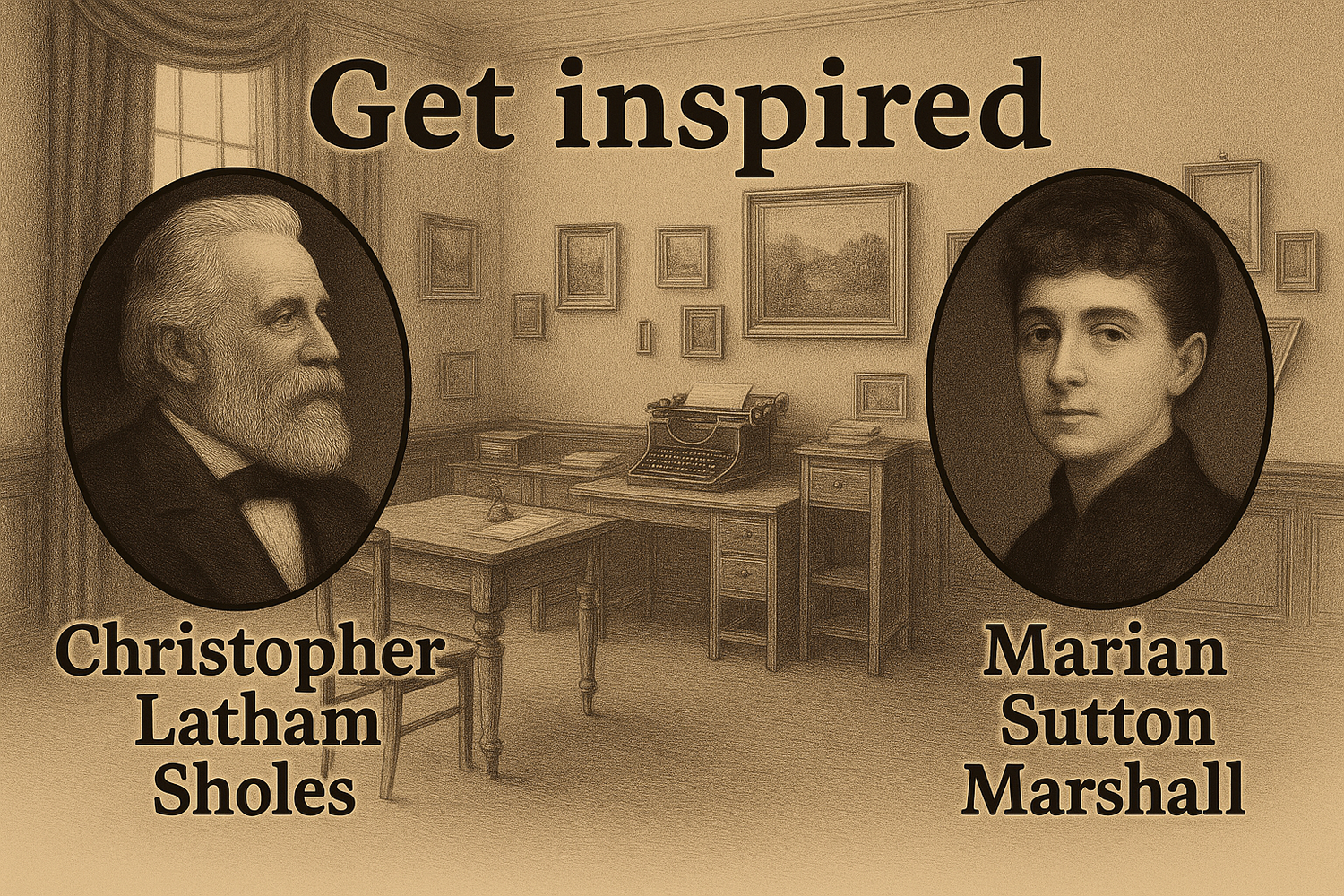
TYPEWRITERS
Discover fascinating facts about typewriters from their revolutionary invention to their enduring legacy in a digital age. Learn about iconic models and quirky anecdotes that shape our world. Explore the evolution of typewriter technology and its impact on communication throughout history.
The Origin of the Typewriter Revolution
-
Who and when invented the first Typewriter?
Long ago, in Milwaukee, Wisconsin, lived a curious inventor named Christopher Latham Sholes (born 1819). He started as a printer and newspaper editor, and he loved inventing machines.
At first, Sholes built a machine to number pages and tickets. But his friends Samuel Soule and Carlos Glidden suggested, ‘What if it could print letters instead?’ So in 1866–67 they began experimenting.
With a few rough models and feedback from testers, they improved the design. In June 1868, they received a patent for their typewriting machine (US 79,265). It became the first practically useful and commercially sold typewriter in the 1870s, after being acquired and marketed by Remington. -
Ever wondered why keyboards start with Q‑W‑E‑R‑T‑Y?
Sholes, along with partner James Densmore, faced the problem of type bar jamming. To address this, Sholes strategically spaced out commonly used letters, leading to the QWERTY layout that is still prevalent today.
At first, people thought typewritten letters looked cold or impersonal, plus they were all uppercase! But soon, businesses and writers loved the speed and clarity.
The typewriter even gave many people, especially, new job opportunities as typists.
Thanks to Sholes and his friends, we can now support you in creating your own stories. Opt for typewriters, not screens—press each key, see your words come alive. Conceivably, one day, you might achieve fame as a novelist by utilising a typewriter as well. -
Who led the way, and how did it change our society?
Some women took typing further: like Marian Sutton Marshall, who opened one of the first ladies‑only typing offices in London and later founded a typists’ union!
Marshall organised and trained female typists and advocated for their rights
With more women typing, offices changed. They could support families, write creatively (hello, future novelists!), and challenge the idea that women belonged only at home. Marshall's efforts paved the way for greater opportunities for women in the typing profession.
Clerical work offered new economic roles and public identities for women across the U.S, UK across and Europe.


